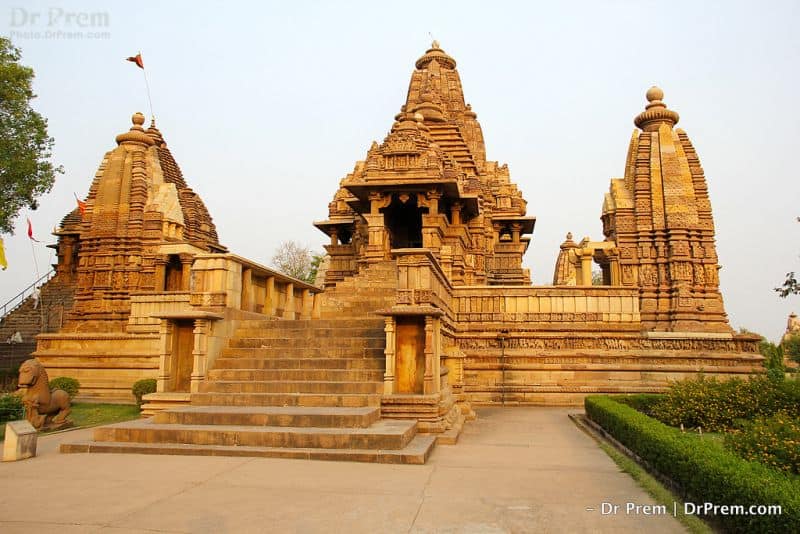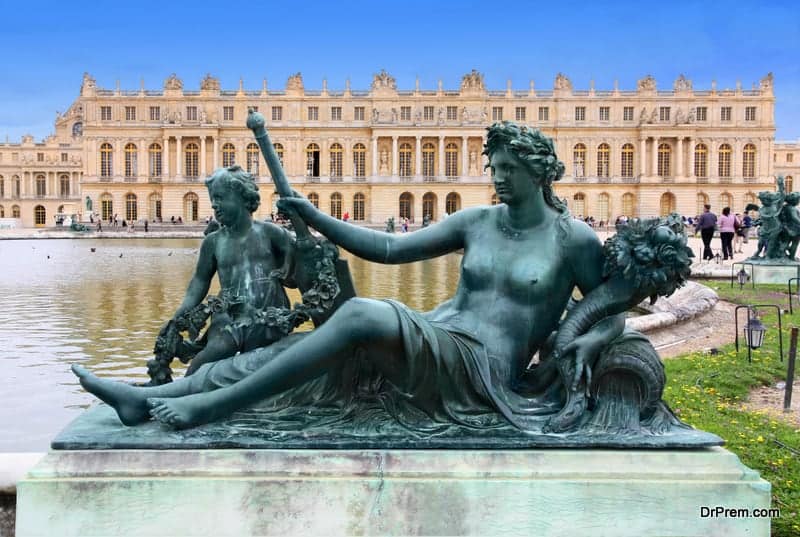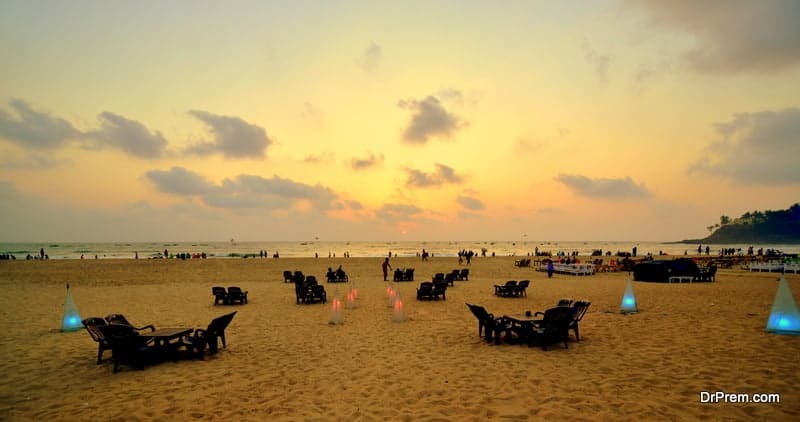Exploring Khajuraho is an amazing experience perhaps the best in the school of ancient Indian temple art and architecture that can leave a visitor dazed. The entire region in the vicinity of the temples is extremely tidy and well preserved. The temples are richly decorated though almost a thousand years have elapsed since their creation. The tourist gets an impression as if these amazing monuments have sprung up right from the centre of the earth just the other day. There are good reasons for why should you visit Khajuraho. It is really worth it.
In this guide, you will read about:
A Complete Guide to Khajuraho by Dr Prem- History, Ancient Erotica, Cultural Influence, Attractions and Many More
-
Why should you visit Khajuraho?
-
Incredible temple structure and décor
-
World Heritage Site
-
Combining Wildlife, Cultural, and ecotourism in Khajuraho
-
Khajuraho – A Cultural tourism destination
-
Khajuraho – An Ecotourism destination
-
Khajuraho – A Wildlife tourism destination
-
Decent stay
-
Shopping opportunities
-
Khajuraho – A brief history
-
Life of people in ancient Khajuraho
-
Khajuraho: International Love and Art History
-
Ancient erotica
-
Exquisite sculpture depicting love and intimacy
-
Medieval women in finery
-
Kama sutra – the pleasure of multiple sex
-
Temple Décor of Khauraho
-
Erotic art in Khajuraho – What it reflects?
-
Eroticism in Khajuraho – The Philosophy behind
-
Influence of nature and environment on Khajuraho art
-
Khajuraho- A critical evaluation from socio cultural angle
-
Specific Khajuraho Temples and their essential features
-
Lakshmana temple
-
Duladeo temple
-
Kandariya Mahadev temple
-
Devi Jagadamika temple
-
Things to do in Khajuraho
-
Explore AyurAragyam
-
Enjoy Dance Festival
-
Explore Temples
-
Visit the Archeological museum
-
Khajuraho -Other attractions
-
Panna National Park
-
State museum of tribal and folk art
-
Pandava falls and caves
-
Narora Sagar
-
Khajuraho Wild life safari – Special attraction
-
Khajuraho Dance Festival – The special event
-
Khajuraho –Restaurants
-
Zorba, the Buddha
-
Bella Italia
-
Paradise restaurant
-
Mediterraneo
-
Raja’s Café
-
Khajuraho Nightlife
-
Captivating Night Sky
-
Sound and Light show
-
Khajuraho – Off the beaten track
-
Yoga- Awesome displays
-
The old village of Khajuraho
-
Raneh Falls and Ken Crocodile Sanctuary
-
Varaha temple
-
Khajuraho – The Best time to visit
-
How to reach Khajuraho?
-
By Flight
-
By Train
-
By Road
-
Khajuraho – Where to stay?
-
Hotel Harmony, Jain Temple road
-
Hotel Taj Chandela
-
Hotel Ramada
-
Hotel Surya Khajuraho
-
Shree Krishna Jungle Resort
-
Hotel Isabel Palace
Why should you visit Khajuraho?
Incredible temple structure and decor
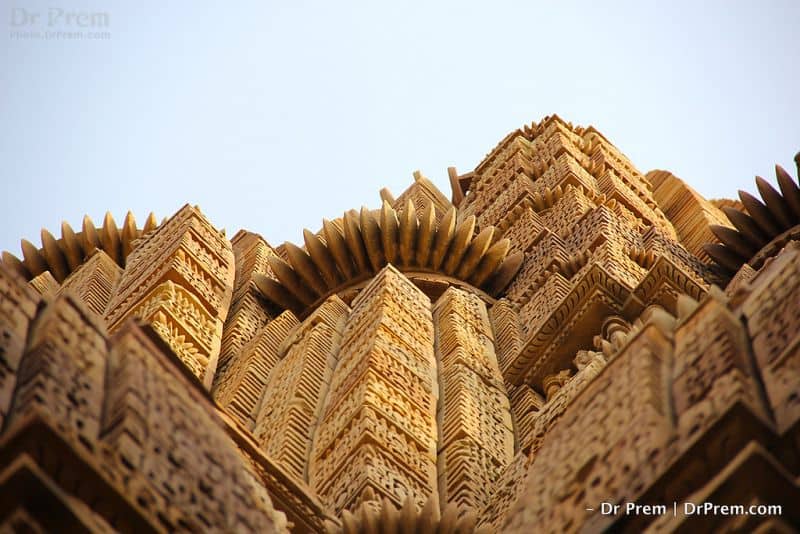
Image Source : photo.drprem.com
The structures and monuments have a well-designed layout founded on laws of engineering. If the structure of the temple suggests sound engineering principles, the carvings and ornamentation would certainly be the last word in the field of contemporary art.
The images sculpted reverberate with boundless energy radiating outward. The figures of men and female sculpted out of sandstone speak for themselves. The word erotic art won’t do justice to the brilliant pieces frozen in stone that awaits the visitor.
The sculptures are extremely graceful, and while chipping the artist have poured in all his brilliant imagination and passion into stonework and created immortal artwork throbbing with life! The figures are not just expressionless inanimate rock art. On minute observation love, passion, humor, hate and ecstasy could be spotted in the otherwise silent statues.
They are surprisingly expressive and seem to establish communion with the spectators engrossed in their magnificence. The eroticism does not suggest profanity. It has a divine connection and this sexual unification is considered sacred. The figures are sculpted and engraved on temples as a show of reverence to the deities.
World Heritage Site
The temples of Khajuraho are declared as world heritage sites by UNESCO for their beautifully crafted rock art. With the majestic Vindhya Range in the back ground, the place is certainly a dream destination for tourists.
Combining Wildlife, Cultural, and ecotourism in Khajuraho
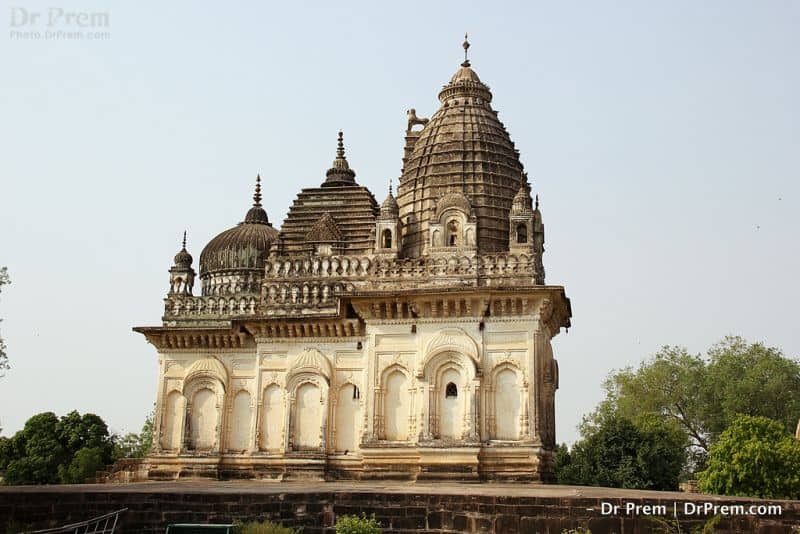
Image Source : photo.drprem.com
Khajuraho is one of the great cultural tourism destinations located in heart of India. The group of monuments located in Madhya Pradesh, India, consists of many Hindu and Jain Temples. These ancient temples reflect the culture, beliefs, and history of the region and country. The destination is accessible from each corner of the country. Visitors can reach there after eight to nine hours from the capital of the country, New Delhi.
Khajuraho is a perfect place to visit as you can combine cultural tourism, wildlife tourism, and ecotourism together at the same place. Visitors can explore the natural beauty of the place and can understand the history of the place as well.
Khajuraho – A Cultural tourism destination
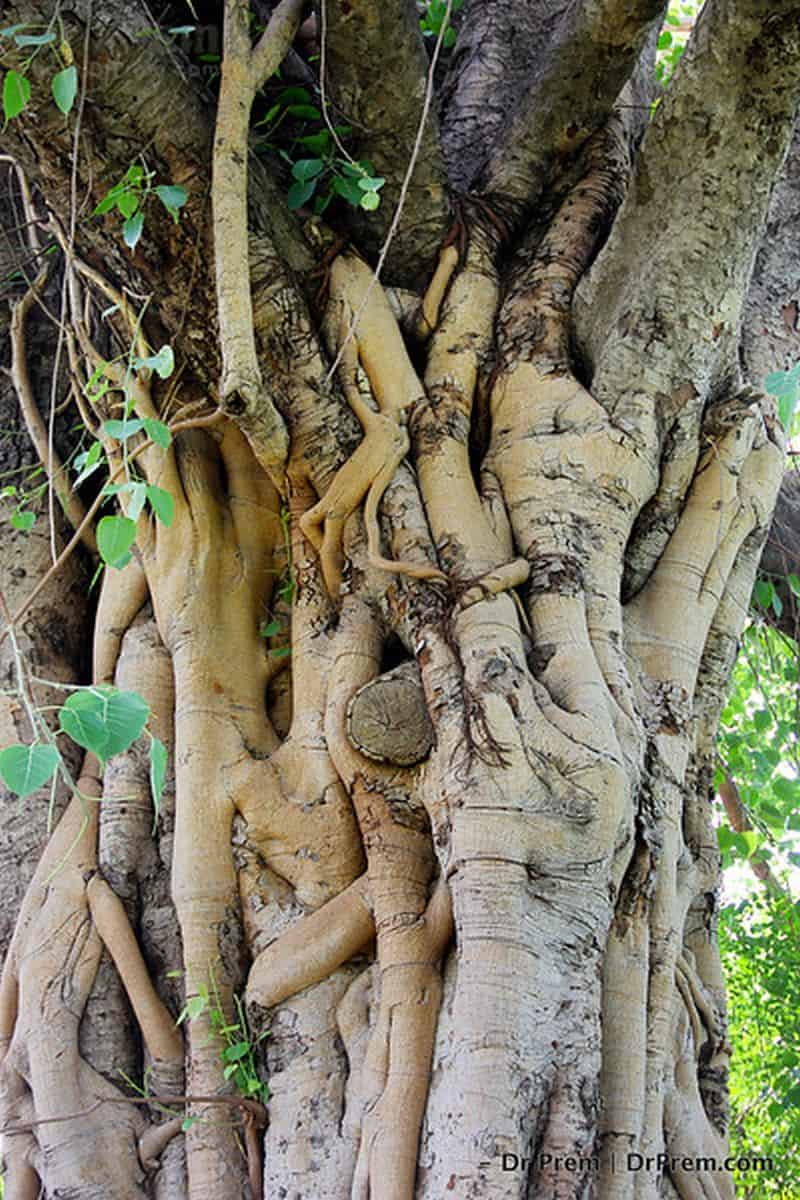
Image Source : photo.drprem.com
India has a vast history and Khajuraho is one of the destinations that tell the story and history of the country. When we talk about the historical value of the destination then we can say that the destination plays an important role in preserving the ancient culture of the country. Most temples of this destination were built between 950 and 1050 AD by the Chandella kings of the region.
These temples were built near Mahoba, the capital of Chandella dynasty. These temples remained the same until the 13th century and went through several changes as the rulers of the area changed. While some tried to preserve and rebuild the temples, others sought to neglect or destroy them. Many temples in the complex are now lost, but a few have managed to survived.
Khajuraho temples were remains neglected during the British rule, but they sheltered many yogis and Hindu pilgrims who visited the destination for religious reasons.
Khajuraho – An Ecotourism destination
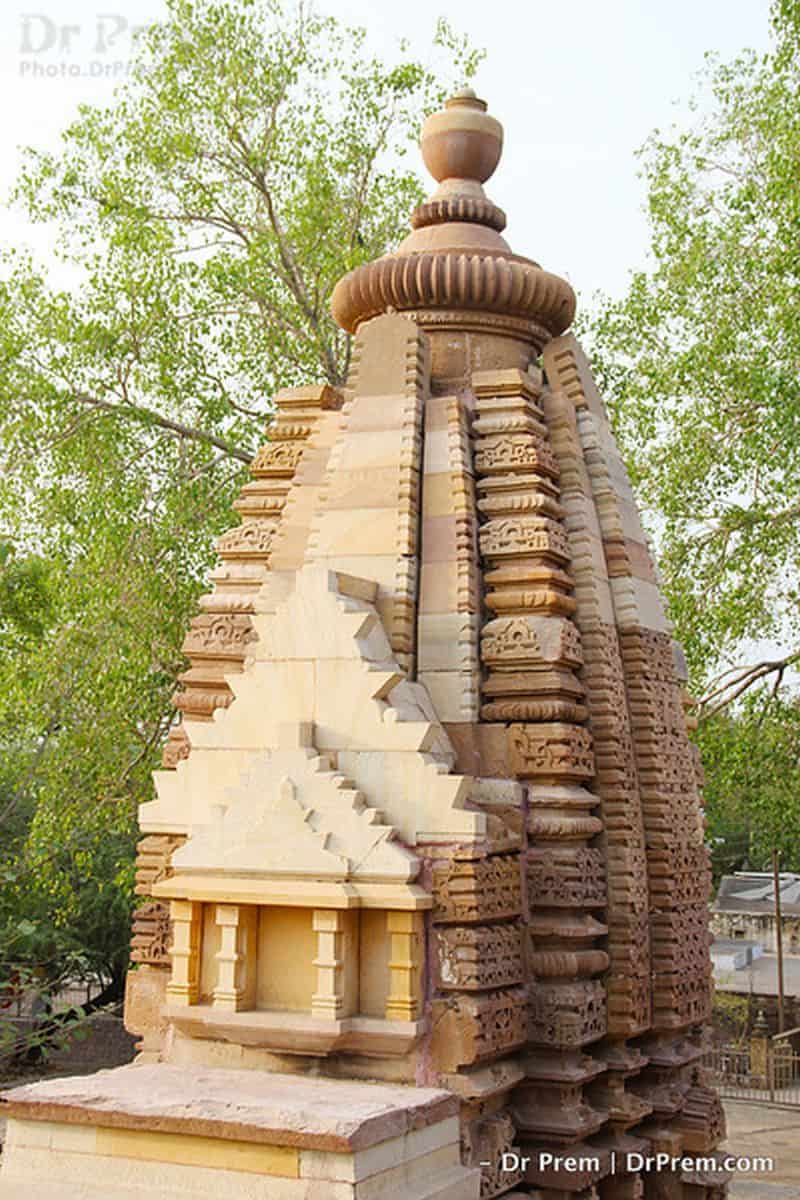
Image Source : photo.drprem.com
Apart from the cultural and historical value of the destination, it is also renowned for its ecotourism opportunities. Khajuraho welcomes thousands of visitors from across the world every year. Khajuraho also has the status of being a Historical Heritage Site of the country.
It is located near the jungle apart from the hustle and bustle of towns. Tourism facility providers offer different packages to their guests to best utilize the time and tourism potential of the region. February is the best time to visit the destination as visitors can enjoy the Khajuraho Dance Festival.
Khajuraho is gaining immense popularity as an ecotourism destination. It is a preferred destination for many tourists. Visitors can roam around and explore the natural beauty of the region. The climate and soothing environment of the place makes it a beautiful ecotourism destination. Visitors can discover various tourism attractions in the region. The destination is also a perfect place for hiking and trekking.
Khajuraho – A Wildlife tourism destination
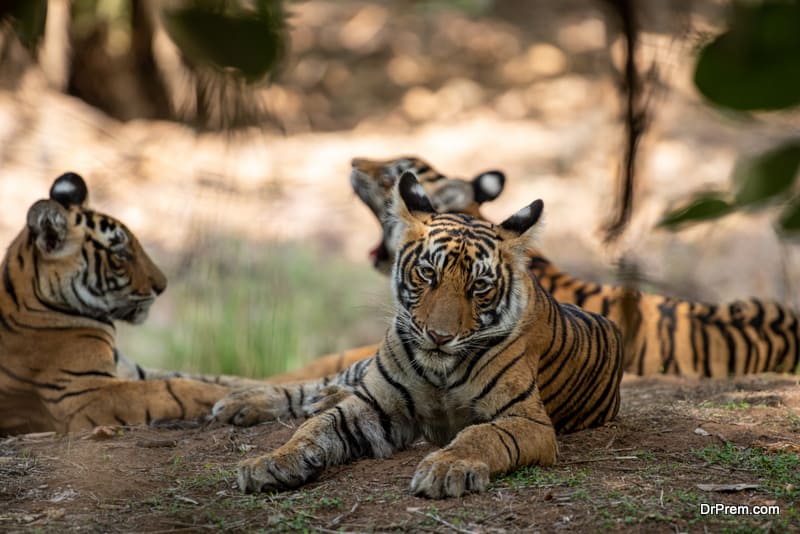
Khajuraho is an excellent choice for a wildlife tourism destination. It is located near the forest, and has facilities that make it easy to indulge in activities like trekking and hiking. Panna tiger National Park and Bandhavgarh National Park are the main wildlife national parks located near Khajuraho. These national parks are the main wildlife tourism attractions of the region. Visitors can explore various mammals, birds, reptiles, and plants species in these reserves.
Decent stay
Hotels are reasonably good and the standard of service excellent. Food is mouthwatering. The surrounding infrastructure and accessibility to Khajuraho is quite satisfactory. This place has got all the essential attractive features that make it a blazing spot in the global map of international tourism.
Shopping opportunities
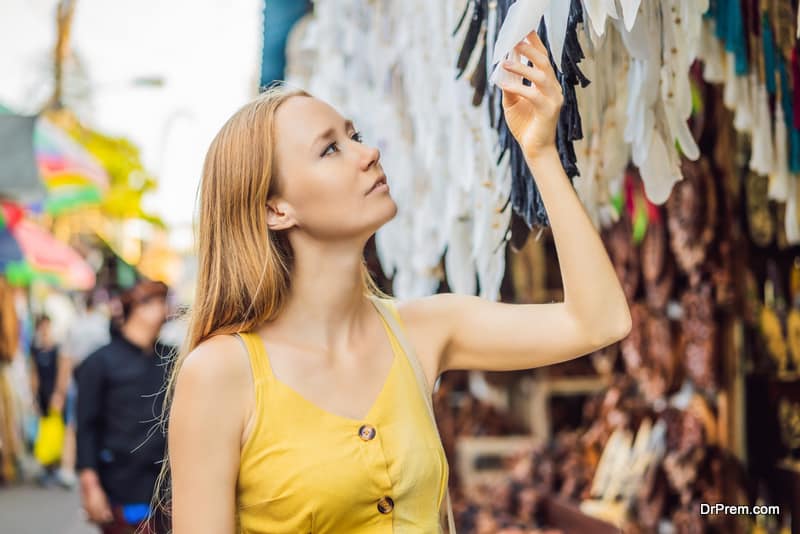
In fact, highly quality art and the delicate finish with which the immortal sculptures are endowed inspires the artist in you. There exist the shopping areas where miniature replicas done in soap stone are put on sale. You have a wide choice of shopping and can decorate your living room with these amazing collections of antique worth.
Khajuraho – A brief history
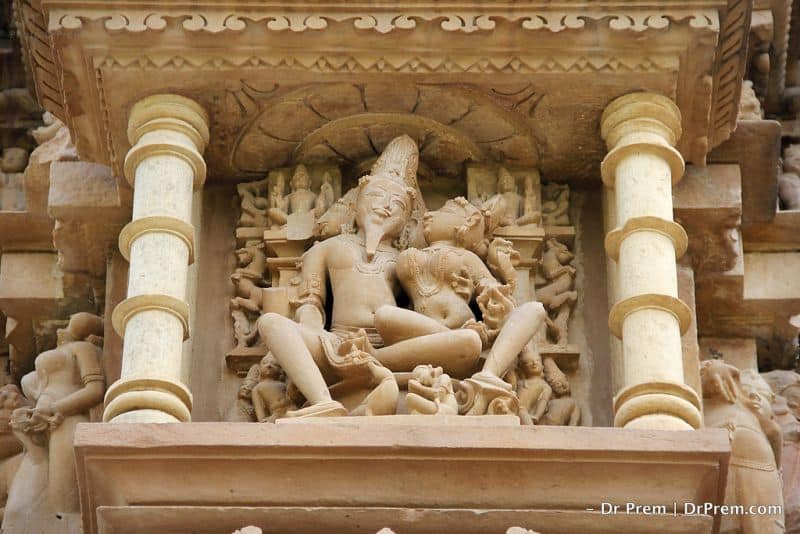
Image Source : photo.drprem.com
The exploration of medieval culture of India remains incomplete without prowling the ruins of Khajuraho and its exquisitely sculpted rocks inspiring the theme of love, passion and eroticism.
Basically, a cluster of amazing monuments located in the Indian state of Madhya Pradesh approximately at a distance of 625 kilometers south east of the country’s capital, Khajuraho is one of the most talked about tourist destination. The sculpted statues throb with life with depiction of male and female engaged in acts of sex and group sex poised at myriad postures and radiant ecstasy beaming in the granite eyes infusing life into them.
This splendid medieval art and architectural feat has been well preserved till date with shine and gloss and has been declared a world heritage site by the UNESCO.
Constructed in between 950 and 1150 much before the Mughal monarchy, these shrines were built by the Chandela dynasty that drew inspiration from the possible tantric cult with its mystic philosophies that pervaded the Indian religious and cultural scene.
Young students who spent their childhood in hermitages practicing Bramhacharya, a total withdrawal from material pleasures, grew up into adulthood feeding on all the teachings and wisdom of life these sculptures have to convey to prepare them for a worldly life.
The name ‘Khajuraho’ has its origin in the word ‘Kharjurvahaka’, which means a carrier of date palms in Sanskrit term. The local residents of the villages in and around these magnificent temples had great regards for these monuments of unsurpassed splendor and have always kept these delicate structures well preserved.
In fact, they drew the attention of the British rulers in the late 19th Century when the surrounding greenery crept into this remarkable piece of art and architecture with thick shrubbery starting to engulf these priceless feats of the artists patronized by the Chandela kings. The place was put under global limelight by sincere efforts delivered by the British engineer TS Burt and later by General Alexander Cunnigham.
The temples of Khajuraho have been considered one of the seven wonders of India. The city was the seat of culture of the ChandelaRajputs who reigned this central portion of India spanning 10th and 12th centuries. It took almost two centuries to carve out these unique temples. Devoid of any citadel, this beautiful locale was enclosed by a wall and the site spreads over an area of around 20 square kilometers. It is also famous for its annual dance festival organized with much pomp.
Life of people in ancient Khajuraho
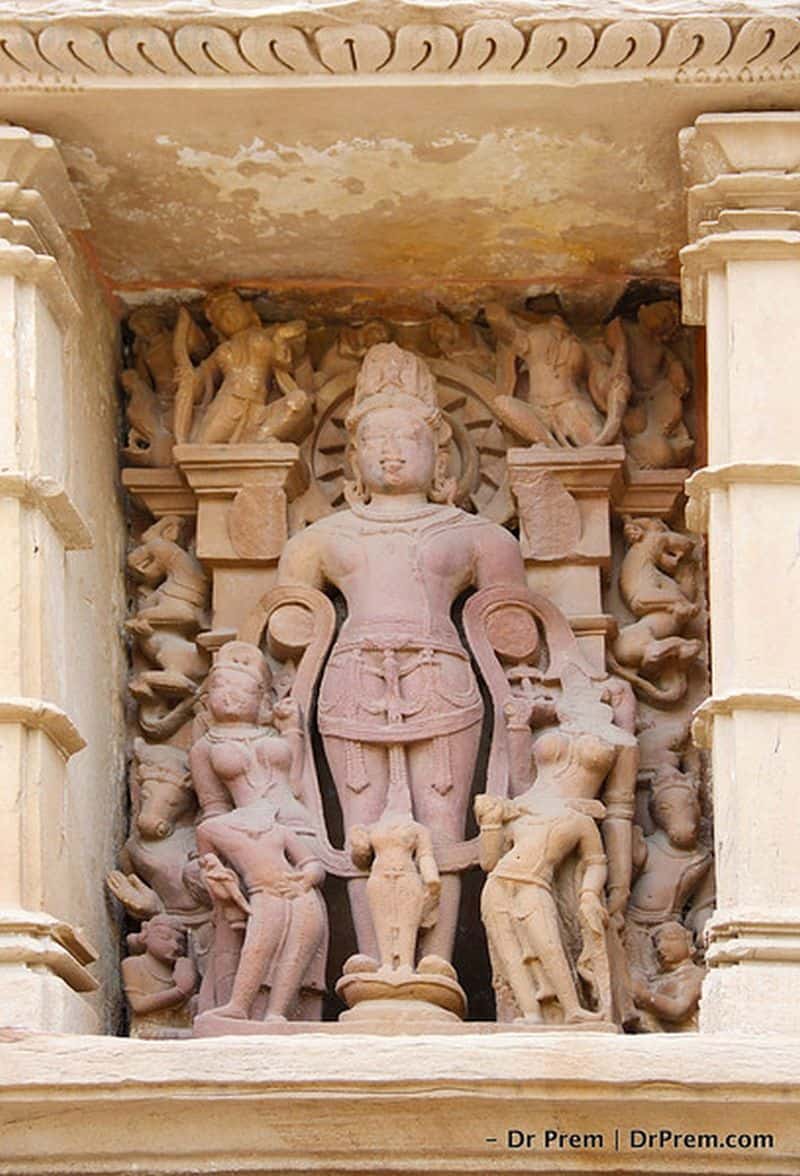
Image Source : photo.drprem.com
Ancient Khajuraho, forming a part of the Bundelkhand Empire under the reign of Chandela Rajputs was a progressive civilization. The people lived in a prosperous and a well administered society. They had a high regard for the divine, were intellectually sharp with a gift of talent that saw wonderful expression in temple decor and sculpting.
Sex formed an inseparable and significant part of their lives. They considered themselves descendants of Moon as their first king Chandravarman was fathered by the Moon god through physical union with a pretty Brahmin country lass Hemvati hailing from the ancient city of Benaras.
Quarries rich with deposits of granite not very far from the spot where marvelous temple architecture stand occupied the ancient sculptures, and the temple designers with their regular feed of raw materials inscribed magic on rocks incessantly. Inspiration and support provided by the Chandela nobility encouraged the fire and imagination inside the stone artists. Their vision took a finite shape and monuments of astonishing beauty were created.
Public display of sex in the shape of finely chiseled stone idols wasn’t a taboo at all. Nor was their depiction directly on the outer body of sacred temples an act of sacrilege. The intent was deliberate. There was always an honest effort to establish a link between acts of sex and the eternal cosmic design unfolding the secrets of creation, propagation and continuity of the human race in the universe.
The stone idols in the act of unification was a source of education to the young children who lived as Brahmacharis (a total abstinence from worldly pleasures) in hermitages under supervision and guidance of enlightened gurus or teachers.
They spent this part of their lives in hermitages and learned from the erotic artwork about worldly pleasures which they are entitled to taste once they attained adulthood. As if the temples were the laboratory of learning and the nude statues formed the tools, specimens and equipment of demonstration.
The Hindu tantric cult had an influence on the lives of people. Their thoughts and philosophies were motivated by a strong craving to unite with the cosmic elements. They desired to freeze in stone different styles of intercourse between men and women in singles and in group encounters on temples. There is an indication that a strong desire existed among people towards spiritual liberation touching the divine. The ritual of carnal acts formed the foundation for unification of humankind with the celestial entities.
Khajuraho: International Love and Art History
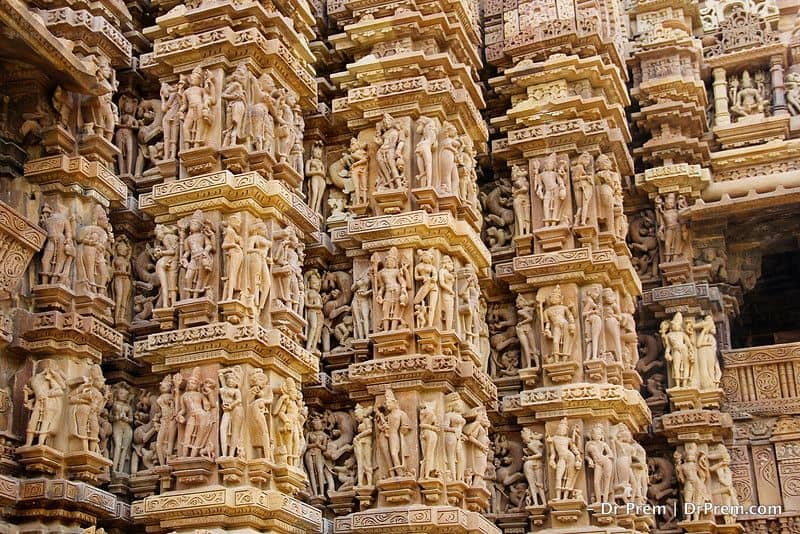
Image Source : photo.drprem.com
Khajuraho, located in present Chattarpur district of Madhya Pradesh has gained international fame for depicting art that flourished during Hindu and Jain periods in ancient India under the patronage of Chandela kings of the Bundelkhand. The art is featured in exquisite temples and carvings of human and animal figures on temples and monuments.
A specialized collection of art and architecture has made Khajuraho come under the international limelight, and it had rightly been declared as a World Heritage site by UNESCO.
Ancient erotica
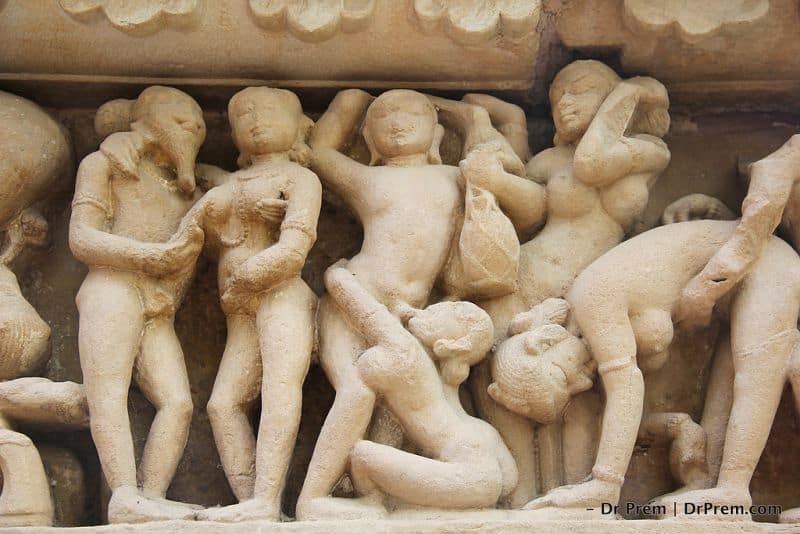
Image Source : photo.drprem.com
The theme of Khajuraho art is centered on erotica. In ancient India, the society had put immense emphasis on sex. It was not at all looked upon an act of profanity or an obscene interaction between two or more human beings which would invite a taboo. Rather, sex was glamorized and immortalized on rocks excavated from local quarries. Sex and its various aspects, its physical and emotional impact on the humans performing it in pairs or in groups were seriously explored.
Exquisite sculpture depicting love and intimacy
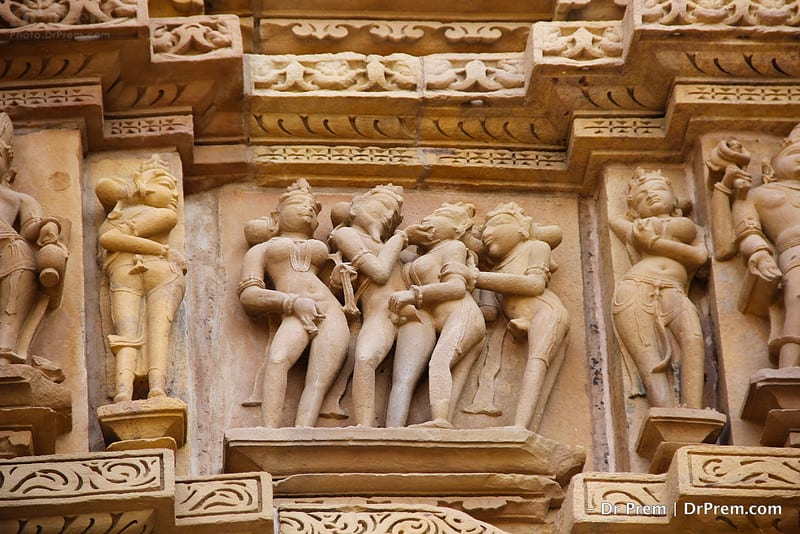
Image Source : photo.drprem.com
Granite and sandstone were often the basic raw materials on which the gifted sculptors worked with chisel until their dreams and visions were immortalized on stone. Even animals found a respectable place in Khajuraho art ceremoniously displaying intimate sexual acts carved on rocks beautifully. The animals were often spectators to an act of sex between humans.
The expressions in their eyes are very suggestive indicating a right mix of mirth and curiosity watching human beings in the most intimate pleasure-seeking action. Sometimes the animal statues were made to participate in the act with human beings in a graceful collaboration where the carnal pleasure is shared between two or more living beings belonging to different species altogether.
Here we find the existence of an unmistakable look of intense pleasure that is reflected from the animal’s eyes. It is a big and blissful ritual where everyone one is allowed to participate and draw ecstasy. It tones the body, purifies mind and brings in all a sense of accomplishment and an overwhelming feel-good sensation shared and enjoyed by all.
Exploring the erotic temple art of Khajuraho is a lifetime experience. Excellent photo opportunities exist ubiquitously across the site giving the travel photographers an insight into the quality of life led by the ancient citizens of Bundelkhand, their attitude towards sex and a serious attempt to immortalize them through carved idols. Their fine sense of artistry is another feature to be reckoned with reverence as well.
The enormous tourist attraction of Khajuraho is attributed to a couple of other factors as well. The background of the Vindhya Mountain range and its proximity to the Panna National Park has enhanced its natural beauty with a generous dose of wild charm.
Medieval women in finery:
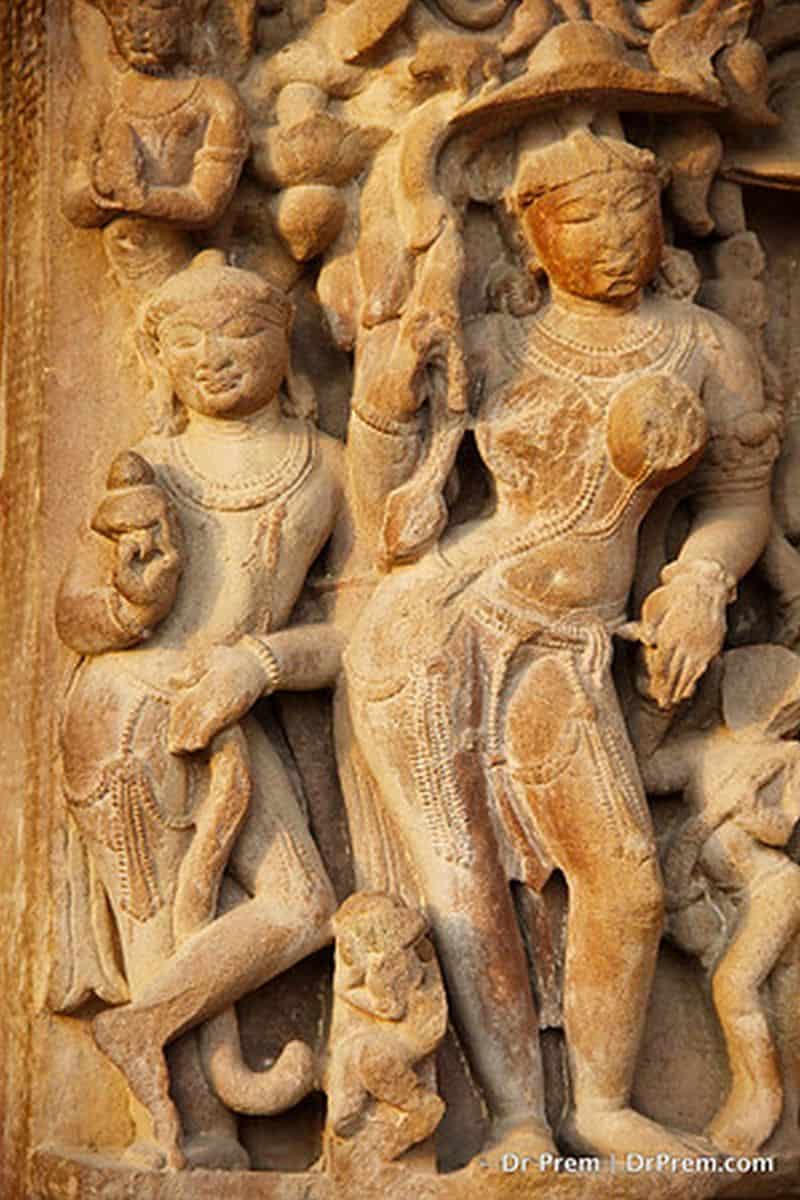
Image Source : photo.drprem.com
The stone carving of the medieval Indian women in graceful attire indicates a strong sense of aesthetic beauty regarding dress code, jewelry, choice of flowers on hair increasing her desirability among men, and her general pose speaks highly of her social consciousness. Just a piece of rock and a magical touch by the sculptor’s chisel has infused life in nature fetching loads of accolades from art critics even several hundred years after.
Kama sutra – the pleasure of multiple sex:
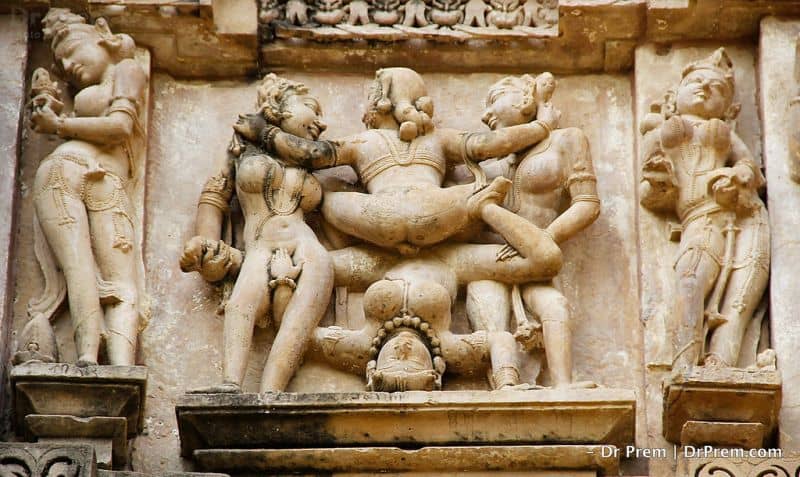
Image Source : photo.drprem.com
Erotic art during the Chandelas of Bundelkhand has attained the apex of glory. The stone sculptures engaged in paired or multiple sex acts have been so lively carved that it has received attention from globally acclaimed art critics. It is not only the artistic skill of the sculptor that has made these erotic statues immortal art pieces, it is the rich philosophy that goes with it as well.
Temple Décor of Khajuraho
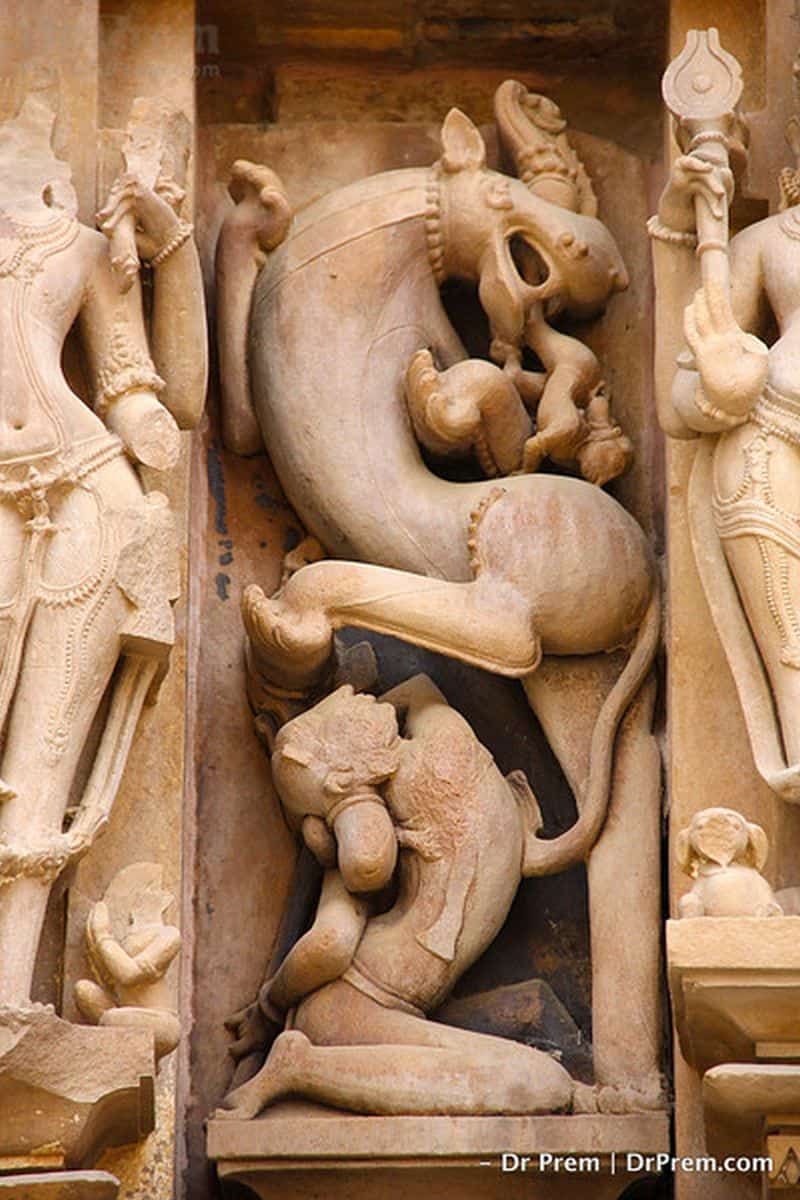
Image Source : photo.drprem.com
The Khajuraho temples are the brilliant remnants of sophisticated and delicately designed monuments having its roots in the school of Indo Aryan architecture. Its construction was rapid patronized by the Rajput rulers who reigned in between 9th and 12th centuries, the wonderfully carved temples look like a frozen melody.
A salient element of Khajuraho temple architecture is that in contrast to the contemporary schools of art the carvings are not placed within the claustrophobic confines of temple interior walls. Rather they stick out on the lofty patio of rock hard stonework. There is a constant strive to mount above the mundane events of existence. The essential components of a group of sculpture do not stand separate on isolated islands. A sense of collective actions binds the figurines in eternal unification.
Aesthetic beauty and a strong sacred ambiance are inherent in the wonderfully designed shrines and monuments. The figurines are lively having a refined touch. Well proportioned the statues have a splendid finishing touch. The statues are neither mammoth sized nor daunting rather are delicately chipped giving an impression of life throbbing within stone creations.
The tallest figurine reaches a height of around hundred feet. Eroticism is a pronounced subject in Khajuraho temple art. The concept is inspired by the Mithuna ritual of the tantric sect. The philosophy emphasizes on the attainment of self-actualization through physical and spiritual contacts between individuals and groups as well.
A full-fledged gratification through sensual union has a great spiritual significance as it is believed to be the glorious pathway for fusion of mortal soul with the divine, and the concept is outstandingly depicted in temple art adorned with rich decor and carvings.
The plan of shrine construction is founded on the fundamental concept of creating compartments or chambers of significant buildings. Essentially there exist three chief chambers known as the Garbhagriha, the Mandapa and the Ardhamandapa, which is actually the doorway into the interior laid in the style of a cross.
A noteworthy feature of Khajuraho temple design is the granite and the sand stone blocks that seem to focus on an upward motion and the resultant heightened curvature increased by an array of distinct upright protuberances.
The collection of open verandas with suspended attics running parallel to the ground invites sunlight into the heart of the temples casting enigmatically brilliant silhouettes of subjects and structures sticking around. The concept and designs have touched a high degree of architectural excellence inviting tourists from all over the world.
Erotic art in Khajuraho – What it reflects?
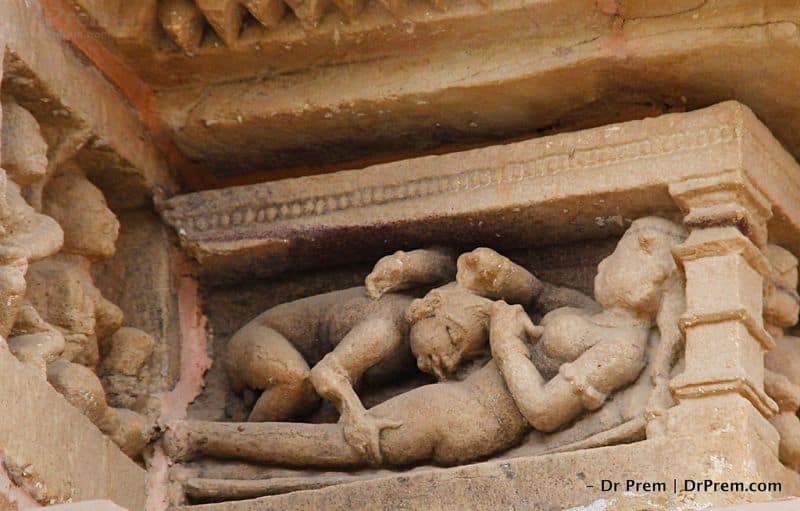
Image Source : photo.drprem.com
Despite all its grace and artistic splendor the Khajuraho erotic temple art is often a vulnerable target of an ethical question fired: How obscene or objectionable is the art? Apparently, an embarrassing question, but it has explanations in its defense.
This is an open-end issue and the answer rests upon your perception of eroticism and carnal acts of pleasure. The essence of the concept that backs Khajuraho temple art suggests sex as a means to an end and not an end in itself. The visual impact of the statues in erotic unification can be quite deceitful unless the inner philosophy is understood.
Facts and concepts of sex advance beyond the physical part and finds explanation in the regular rhythm of life that is fundamentally guided by the cosmic energies. The eventual target of sex is the massively explosive energy that is released into the system. This is not an external energy it is built within out of the fundamental elements that constitute us. The outburst of celestial elation and communion of sexual pleasure with the cosmos is perhaps best exhibited in the Khajuraho temple sculpture.
As explained by the Indian philosophy, sex is something much above the mundane positioned at an elevated platform rolling the ball of eternal cycle of life and death. If love making wasn’t a delightful experience man would seldom think of unifying with his female counterpart leading to the dreadful consequence of becoming extinct as a species.
Some cosmic entity who designed the universe must have set its equilibrium in such a brilliant fashion that life without sex is unthinkable, and the act releases enough energy to support creation of future progeny. The result of sexual explosion is akin to cosmic eruption where elemental fragments collide to liberate heat and eventually waves of energy.
The erotic art in Khajuraho temples is not bound within the confinement of physical union alone for it justifies the act and finds a parallel phenomenon displayed by the cosmic bodies. All the storehouse of energy be it sexual or cosmic is located within. Drawing an analogy, we see that all the erotic images are placed outside the temple.
The energy is stored inside within the walls, and it is here where the divine power the source of energy resides. Much of the artwork is symbolic. The statues frozen in erotic acts represent the sea of knowledge. This is sculpted in stone so that it is preserved down the generations and knowledge shared. Khajuraho temple art is erotic but not abusive or profane. It is a vast inventory of wisdom conserved in stone.
Eroticism in Khajuraho – The Philosophy behind
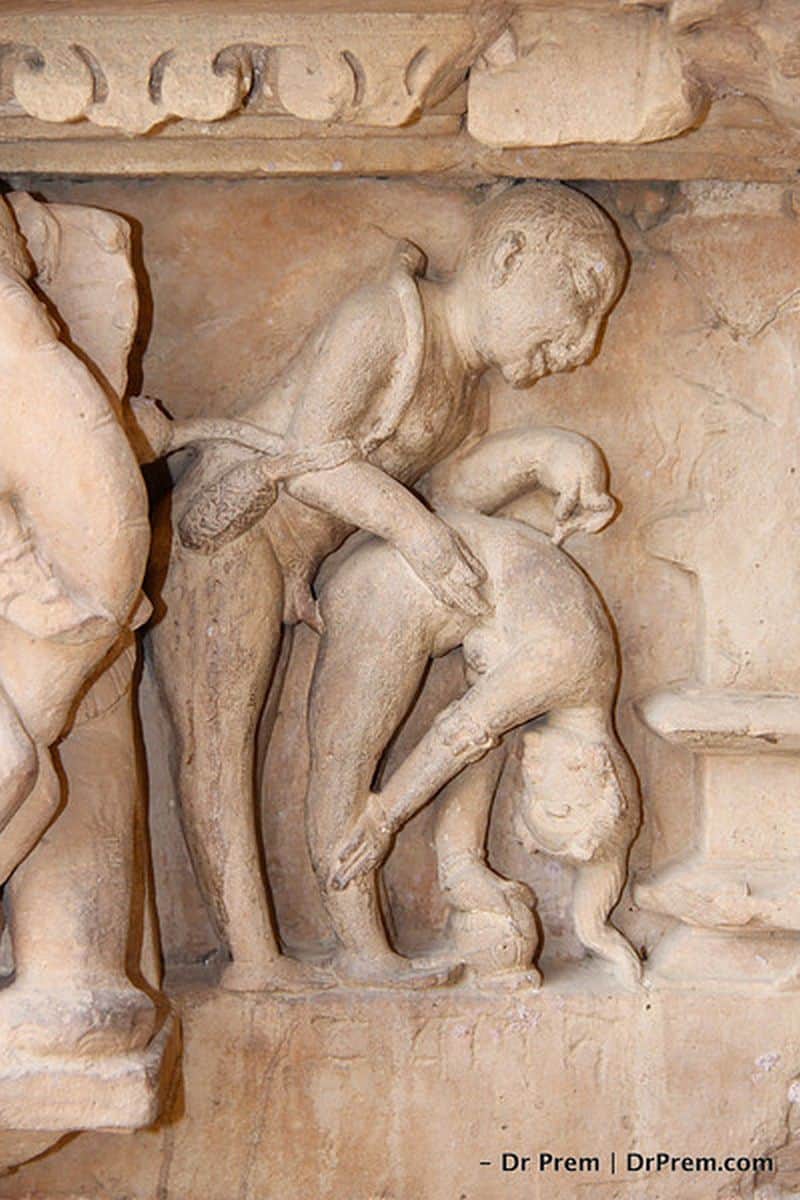
Image Source : photo.drprem.com
“Passionate couple sculpted in granite and pressed into an act of coitus hung before my eyes from the temple wall. The expression in the faces was furrowed with intense pleasure” Mr Alexander finished his statement with a broad grin showing really bad tobacco-stained teeth and lit up a cigarette. “There was a foot long elephant carved out of stone just adjacent to the busy couple’ he continued.
The beast was exquisitely crafted and I couldn’t help appreciating the mastermind behind the creation. More surprise was waiting for me as I closed in on the work of art. The granite pachyderm cast a sidelong glance at the ecstatic couple and was actually smiling” the curator of The Indian Museum broke into waves of laughter showing his nicotine coated set once again.
The significance of carnal pleasure influenced the lives of people in India in the medieval ages between the 10th and the 12th centuries. It was a medium of supreme attainment in life and was patronized by Chandela Rajput kings of Bundelkhand, the territory in which Khajuraho is located. It paved the path of unification with the divine, the different postures of sexual intercourse between man and woman, man and man and between man and beast was immortalized in art.
Elaborately carved monuments are embellished with designs of sexual ardor, eroticism, dance, melody and other artistic ventures. Majority of the statues are however chiseled in softer sand stone as granite is hard to chip, the subjects nevertheless pulsate with life.
It is pleasantly astounding to discover life in the past was so much aware of the multifarious amazing ways of unification between individuals in single and in groups. It leaves you wondering if sex occupied all the waking hours in their lives. The purpose behind inspiring sex in art has different connotations.
The most popular undertone is to educate people with a profound comprehension of their most basic and primitive worldly desires. As if it is strongly suggested that the fundamental needs of man like food, clothing and shelter remains an incomplete list unless sex is included as well. Love making was not a mere act but it was studied, cultivated and practiced with dedication and relish.
The existence of erotic art in the sacred grounds with temples in close vicinity has been the result of serious deliberation. It was considered a good omen to the builders and temple masons. The open-minded stance towards sex and glamorizing it to the height of delicate art is a clear indication of a society blessed with prosperity and bliss.
Influence of nature and environment on Khajuraho art
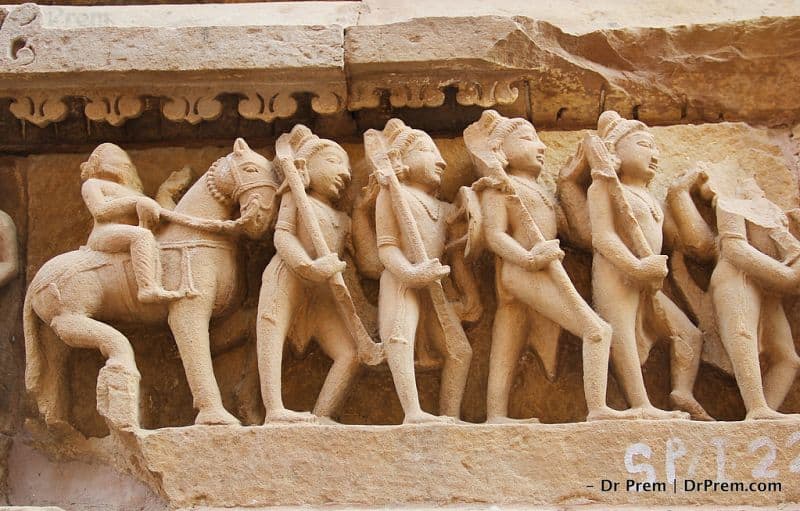
Image Source : photo.drprem.com
The life and culture of people in Bundelkhand area during the reign of Chandelas were significantly controlled by the surrounding environment. Quarries of stone, mounds of pebbles, covers of woods, reservoirs and natural sources of water affected their regular activities kept them occupied with steady employment and found expression in their contribution to art and architecture.
The mines located in the neighborhood supplied raw materials like granite and sandstones and the sculptor’s dreams were translated into reality.The rocks and stones were painstakingly fashioned with imagination and flair put into harmony and awesome specimens of temples, reservoirs, sparkling sculptures and beautifully decorated gardens were crafted.
The sandstones mines of Panna supplied the requisite grade of materials out of which the Khajuraho artists built temples and carved wonderful figurines of divine excellence. The work of the artists was generously funded by the Chandela rulers who were great patrons of art.
The expenses needed to support these magnificent creations were astronomical, and the diamonds mined in the vicinity of Panna supported the financial outflow. So the expertise was available among the people who had a burning penchant for creativity and visual arts. The encouragement existed from the rulers, and the financial backup was readily available.
Exploration of Khajuraho temples clearly indicates reflection of nature manifested in elaborate detail. Realistic depiction of local flora and fauna on the body of the temples and monuments suggests that the artists were keen observers of the local environment and the pace at which the different elemental constituents of Mother Nature interacted among themselves.
Motifs of temples included hunting scenes and how men reacted to the local environment were realistic and throbbing. Their vivid depiction of Mother Nature in all meticulous detail is a lucid suggestion of the minute observance combined with a little imagination and finesse.
There is a touch of enough elegance in every curve and line as if the images frozen in rock would spring back to life any moment. The Khajuraho culture and celebration drew water heavily from the local resources, which were basically split into two parts. One pertains to water supply drawn out from boring the deep layers inside earth and the other comes from the regular sources from springs and creeks. Water played a vital role in observance of sacred rituals and beautification of the monuments.
The inspiration and creativity of the artists found its support from nature consisting of surrounding panoramic landscapes and greenery. These elemental aspects of nature are reflected wonderfully in temple ornamentation.
Khajuraho- A critical evaluation from socio cultural angle
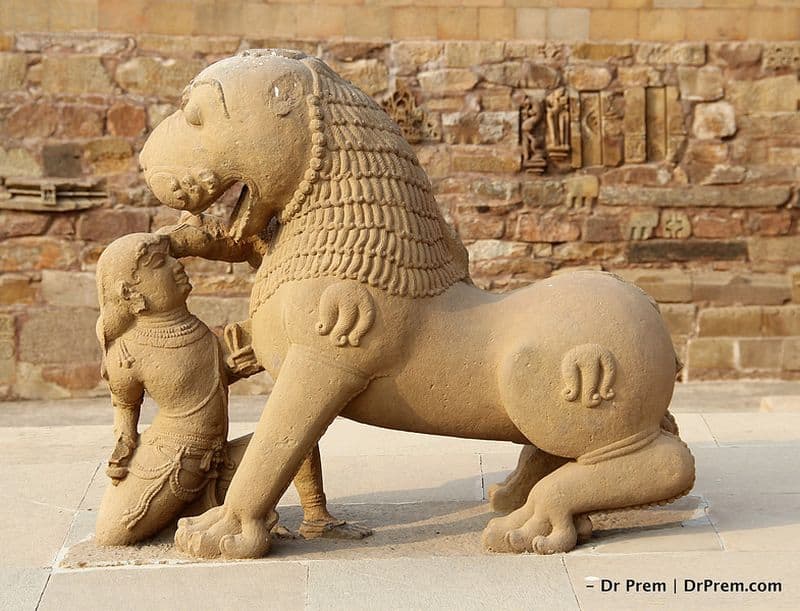
Image Source : photo.drprem.com
Bundelkhand under the reign of ChandelaRajputs evolved into a prosperous civilization attaining a high degree of cultural refinement. Kings encouraged art and architecture that saw new dimensions with a vision and thought process built on progressive lines. The society was balanced and constructed on a strong foundation of affluence both pertaining to intellectual sphere and material wealth as well.
In general, it was more or less a liberal society, which put emphasis on acquiring knowledge in all fields including sex, which commanded a pivotal role in lives of men and women.Master sculptors honed their skills and the tools in their grips turned into instruments that tuned in rich music finding an eternal abode in temple designs and construction of legendary monuments.
Their dreams were realized, and their skills and workmanship rewarded with recognition and material benefits. Open sex wasn’t a taboo or no guilt was associated with open acts of sex and multiple sex for that matter. It was an expression of subtle art encouraged in a tension free society where issues of poverty generally did not exist. However, it was predominantly a Hindu kingdom, and people expressed their awe and reverence to different deities like Lord Surya and Lord Shiva and erected temples in their honor.
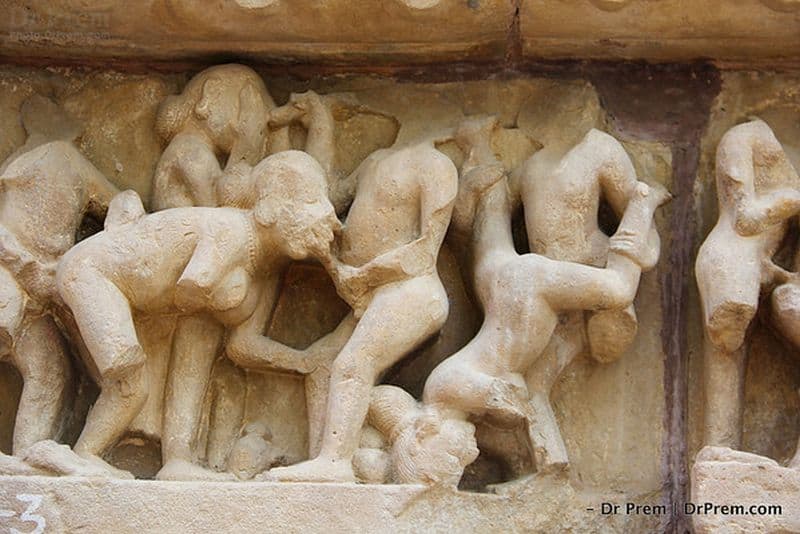
Image Source : photo.drprem.com
The sculptors of Khajuraho fashioned pure magic with a great wisdom in visual art. The erotic representations in stone were considered good omen. A lot of attention was focused in detailing the carved statues. The spectacular finish of these stone images would leave you captivated. The female statues were sensual and the artists were successful in making them pulsate with life. However, the erotic art of Khajuraho has no connection with Vatsayana’s Kamasutra who was considered ancient India’s sex guru.
Carnal knowledge and quest for physical pleasure were inherent in the society. It was a cultural icon, which was highly revered and practiced with sincerity and intense gusto. The society believed in divine powers. There was always an endeavor to set up a channel of communication with the gods and deities like Lord Shiva and Lord Surya.
The medium of communication was the intricately decorated temples adorned with erotic sculptures to elevate the sublime tone of these immortal creations of art. Beneath the external stratum of erotic art the style and philosophy embedded into temple architecture goes deeper touching the aspects of higher truths of life and death. The amazing backdrop of the Vindhya Mountain range offers an ideal scenery to these immortal creations and helps amplify its impact on the mesmerized onlooker.
Specific Khajuraho Temples and their essential features
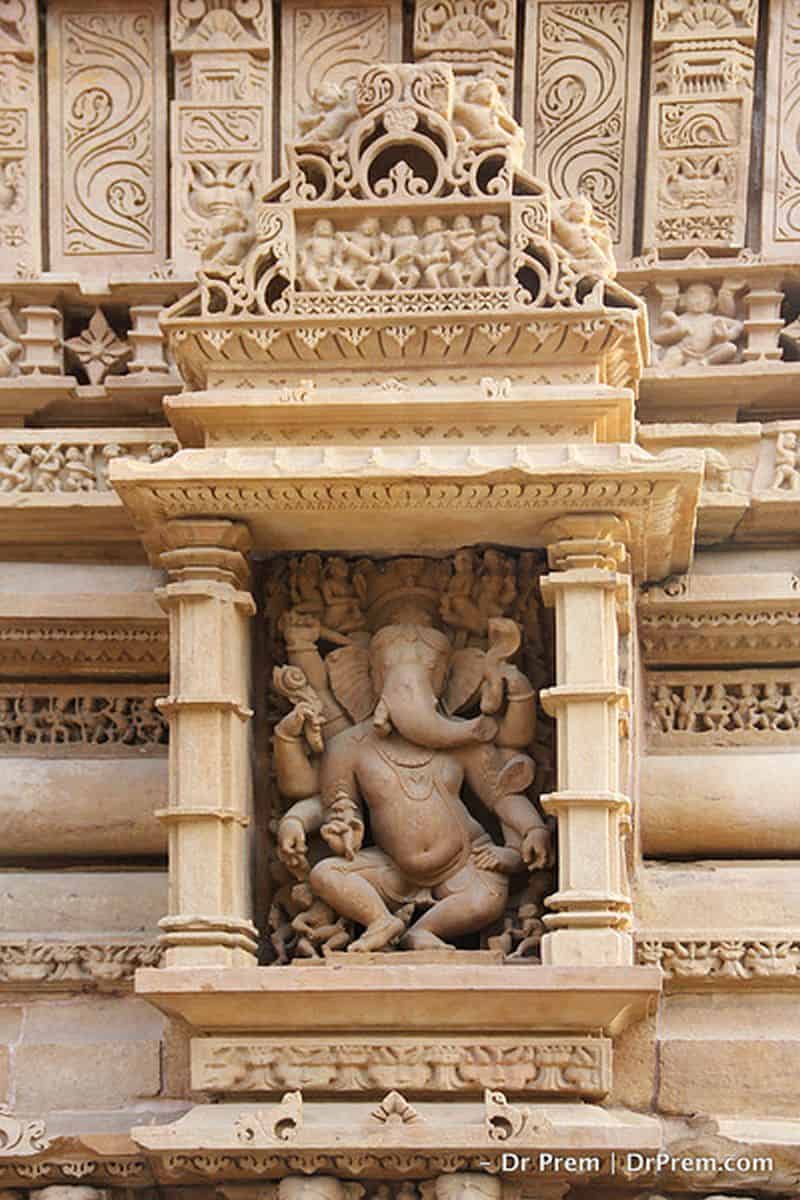
Image Source : photo.drprem.com
A cluster of temples forms the backbone of Khajuraho’s ancient architectural marvel. Influence of tantric cult is a marked feature that could be traced back while making a critical exploration of these awe-inspiring monuments. Some of the main temples are enlisted here with their typical designs:
Lakshmana temple

Image Source : photo.drprem.com
This splendid creation out of rock is built in devotion to Lord Vishnu. It is a Hindu temple located in the Western cluster. The structure rests on a podium and essentially features the necessary components typical of Hindu temple blueprint. The spire or the shikara is a collective fusion of the secondary tower with the main tower. The temple has an imposing gateway, mandapa and garbhagriha.
A number of windows are cut out through the wall laid with intricate designs and an elaborately designed banister. The sacred doorway is made up of seven perpendicular flats; the innermost is designed with diverse personification of lord Vishnu. There is a double row of wonderfully designed figures and characters from heaven. The joist illustrates goddess Lakhsmi, the symbol of wealth and prosperity with Lords Brahma and Vishnu on either sides.
Duladeo temple
This belongs to the southern group of temples dedicated to lord Shiva where the form of the lord is abstract in the shape of Linga or phallus. The temple walls exhibit dancing apsaras or dancers of paradise with soft and yet seductive features.
The word Duladeo means holy bridegroom. This belongs to the southern group and stands on the banks of the river Khodar. The temple consists of the entrance, the reception area, the main hall and a chamber without an ambulatory. The temple is put under the group Nirandhra.
Kandariya Mahadev temple
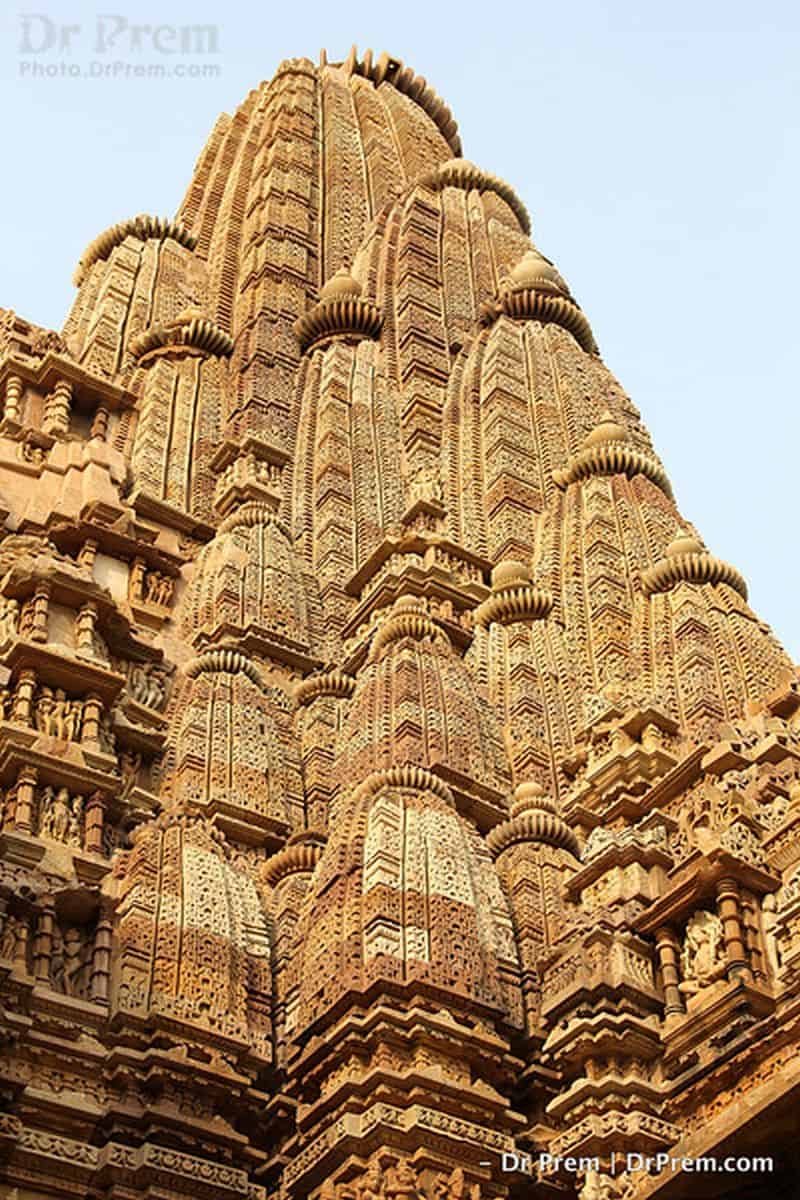
Image Source : photo.drprem.com
This is the largest and famous Khajuraho temple also well known for its complicated motif. The principal spire of the temple represents Mt Kailasha, the Himalayan abode of lord Shiva and mounts to a height of around 31 meters. 84 subspires encircle the main spire. These are known as Urushringas. There exists a marble Linga(the male phallus) right inside the chamber. This Linga is the symbolic representation of lord Shiva. Here, the erotic statues burn with excitement. Halls with galleries indicate high architectural skill besides entrance portico and inner chamber are other facets.
Devi Jagadamika temple
It belongs to the northern cluster. Exhibiting a plethora of erotic sculptures this temple is gorgeously designed. A huge statue of Jagadamba sits in the central chamber.
Things to do in Khajuraho
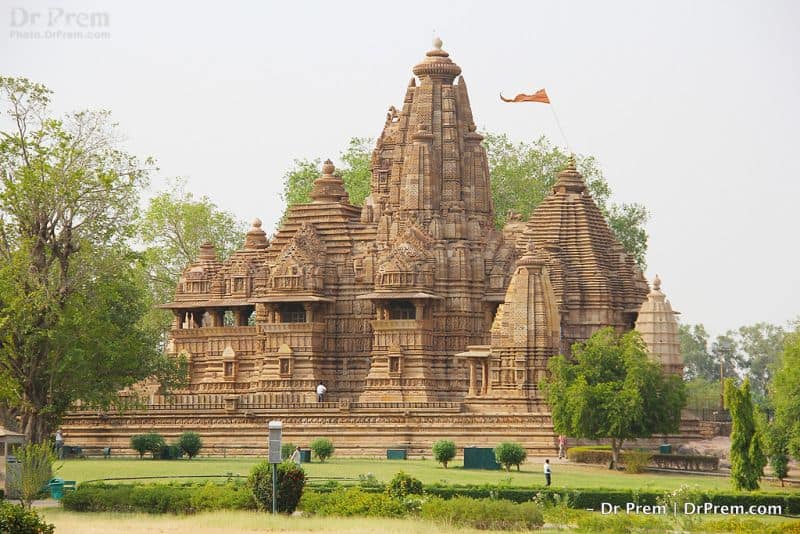
Image Source : photo.drprem.com
Once you land up in Khajuraho, you will be amazed at its picturesque setting. The cluster of temples and architectural masterpieces surround you on all sides. There is enough space to explore around on foot. The entire plan of the site is well organized and very neatly distributed over a vast area carpeted in greenery. The distant Vindhya Mountain range acts as a fitting background to this amazing tourist destination.
There are lot many things to do in Khajuraho and a lot more explorations could be launched whether you are single or moving in a group.
Explore AyurAragyam
You may well start the day with a bit of wellness therapy in a Keralite run Ayurvedic centre known as AyurAragyam. The centre offers complete health treatments and wellness therapies ensuring healthy and long living to everyone. The experience would be relaxing rejuvenating you with fresh energy.
Enjoy Dance Festival
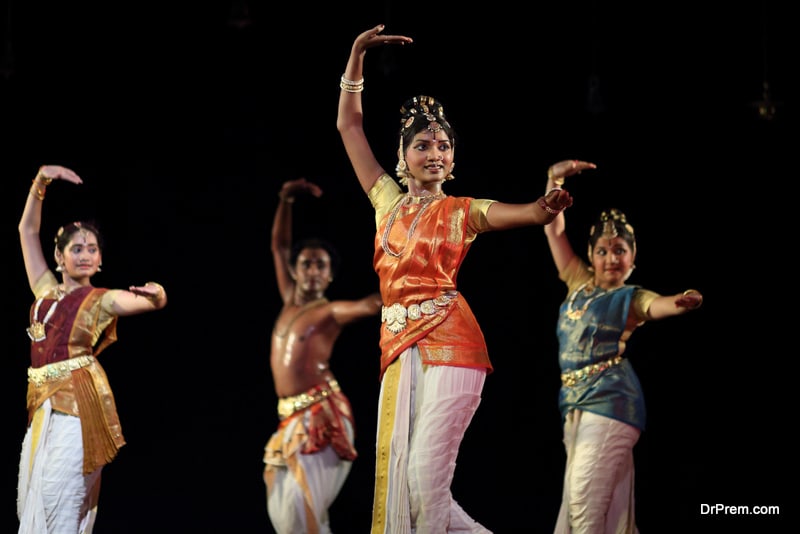
An all-India dance festival is organized in Khajuraho in the months of February and March when the spring season is in full bloom. Dances cover a wide range of principle recognized schools like Bharatnatyam, Kuchipudi, Kathakali, Odissi and Manipuri. Renowned dancers of national level participate in this festival, and the air is literally charged with intense mirth. You can well be a part of the audience with every beat and steps of the gifted dancers.
Explore Temples
Kandaria Mahadev Temple
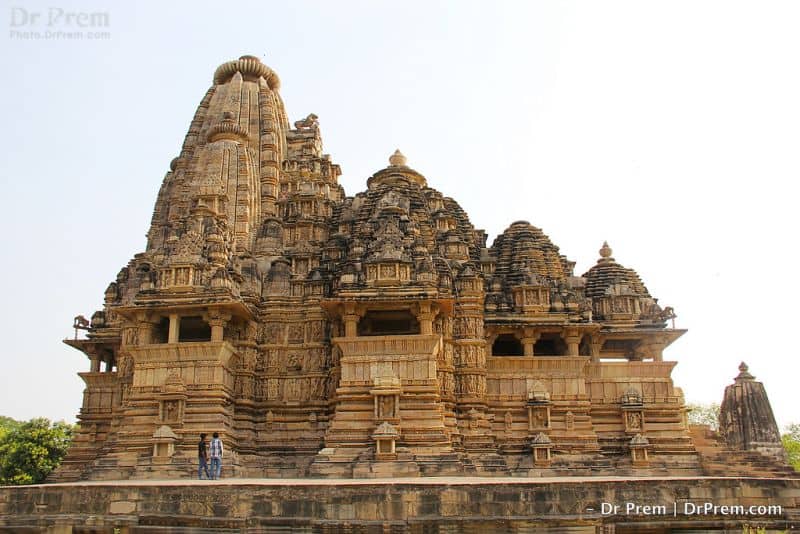
Image Source : photo.drprem.com
An exploration of the Kandaria Mahadev temple in the western part of the complex will fill you with joy. This exquisitely designed temple dedicated to Lord Shiva is the most spectacular and the largest temple in the entire Khajuraho complex attracting tourists from India and abroad. This temple is also declared a UNESCO world heritage site.
Lakhsmana temple
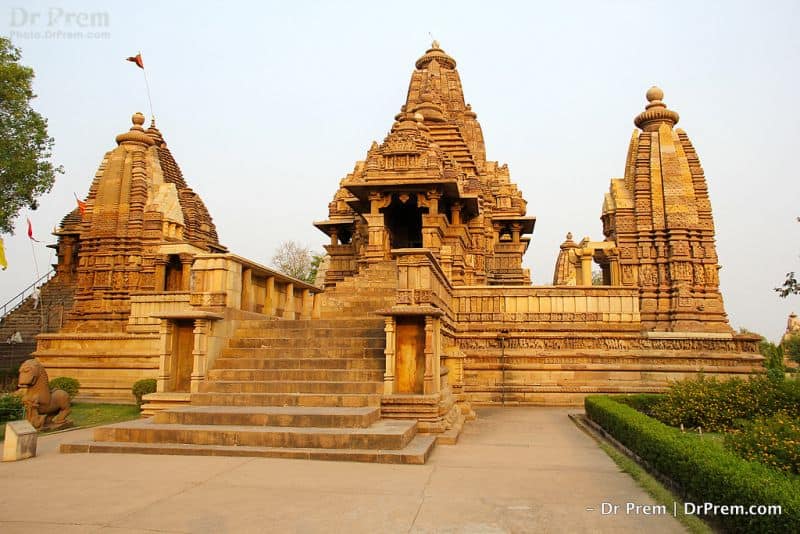
Image Source : photo.drprem.com
Next you may proceed on to visiting the Lakhsmana temple located among the western group of Khajuraho temples dedicated to Lord Vishnu. This temple is known for its architectural splendor and is one of the most beautiful temples in the entire Khajuraho complex built by the Chandela kings of Bundelkhand
Vamana temple
You should make it a point not to miss the Vamana temple. This temple is located in the eastern block of temples and is dedicated to the dwarfed incarnation of Lord Vishnu also known as the Vamana Avatar. The temple has an entrance porch, a vestibule and a Maha Mandapa (Grand Stage). The interior walls of the temples are sculpted with voluptuous figures of Apsaras or heavenly nymphs sharing carnal pleasures with Munis or mystic saints. The architecture of the temple is mind blowing.
Brahma Temple
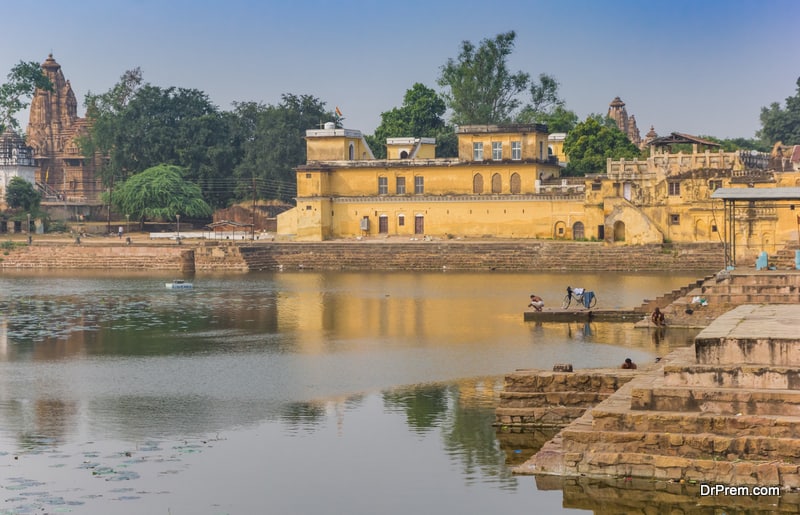
If you are tired after visiting the above temples, you can relax under the cool shade of a tree as there is no dearth of greenery in Khajuraho. Next you move towards the Brahma temple, a great tourist attraction for its excellent architectural style. This is the oldest temple in the eastern group, which was constructed way back in 900 AD. The temple is built by the side of Khajuraho Lake.
Chitra Gupta temple
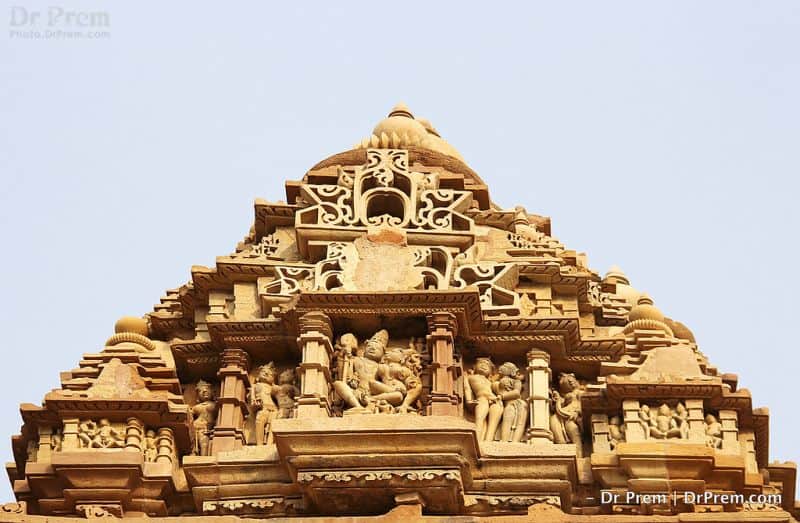
Image Source : photo.drprem.com
This is quite a masterpiece architecture worth exploring. Known for its architectural marvel, the temple is dedicated to Lord Surya or the Sun. It features an entrance porch, a sanctum, a vestibule and a Maha Mandapa. Inside this gorgeous temple stands the magnificent statue of Sun god riding a chariot drawn by a team of seven horses.
Dulhadev temple
Your trip to Khajuraho will be incomplete unless you visit the Dulhadev temple dedicated to Lord Shiva, which is the last temple built among the southern group of temples. Dulha Dev or Dulhadeo means Holy Bridegroom where Lord Shiva along with his wife Goddess Parvati is seen along with intricate carvings of Apsaras spread over the temple ceiling. Located on the banks of Khurao Nullah, it is perhaps the best temple in the complex with a stealing beauty.
Visit the Archeological museum
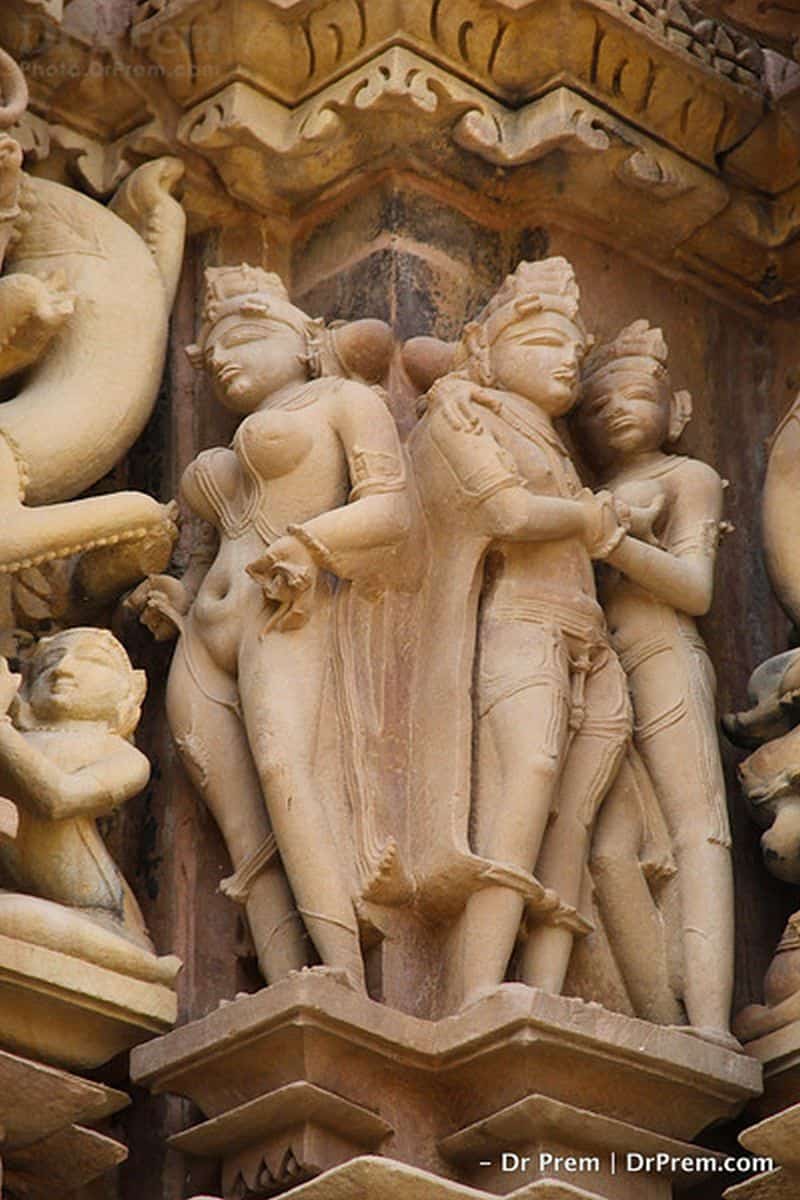
Image Source : photo.drprem.com
Located opposite the circuit house, the museum is plainly gorgeous and doesn’t charge any extra as your temple visiting ticket includes dropping at the museum as well. The foyer is grand and guarded by amazing statues of the river goddess and Ardhanari(a half female) at the rafter.
Khajuraho -Other attractions
Khajuraho as a tourist destination ranks among one of the world’s best ones where the primary focus is on temple art, building architecture and spectacular sculptures. Apart from its appeal centered on temples and erotic art, there are yet other attractions that keep the tourists coming back to this place in quest of pleasure, travel photography and fun.
Let us explore some of the other attractions of Khajuraho that hold the tourists mesmerized:
Panna National Park
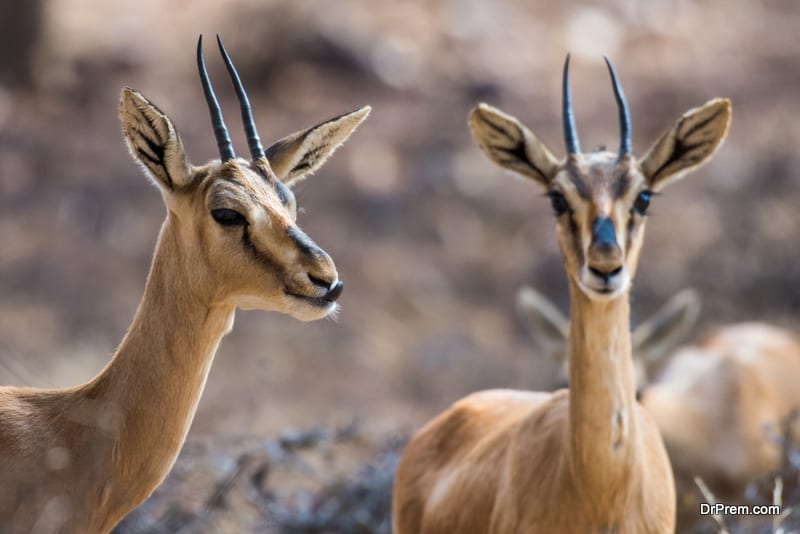
This is a wild abode home to a variety of flora and fauna. The deep gorges and the rivers inside the park are amazingly wonderful where you get a feeling that you are in a perfect paradise on earth set amid unspoiled nature far from the din and bustle of city life. This is a place of perpetual bliss.
Covering an area of over 542 sq km, this park is the twenty-second tiger reserve in India.
Dawn breaks here with the twittering of different bird species as the mellow rays of the sun penetrates through the thick foliage in an attempt to hit the moist ground that becomes a bed of dry leaves, shrubs, grassland and, of course, the predators’ tracks triggering thrill.
The landscape inside the park is amazing that shelters tigers, sambars, wild dogs, chinkara, chital, sloth bear, leopards, rodents and reptiles. Countless species of birds keep the forest ambiance alive with their constant cacophony. As the sun goes below the horizon and dusk sets in, the forest wakes up filled by exotic grunts, growls, hoots and howls. The atmosphere builds up slowly charged with high voltage thrill. The Park is about a distance of 25 km from Khajuraho set amid exquisitely beautiful natural surroundings.
There is a Tiger reserve in the park monitoring the rise in tiger population after it suffered a sharp drop in the total number of tigers roaming the park. As per recent census, there are around five tigers and ten cubs inhabiting the wild. Steps are taken to control habitat loss and poaching. The tiger reserve has all the thrill of the world in store for you. Even if you fail to locate a tiger, the atmosphere is enchanting enough for you to keep Panna national park atop your bucket list.
State museum of tribal and folk art
This is another important attraction in Khajuraho and a very popular haunt among tourists. This museum has a rare collection of artifacts and articles, which represent vividly the tribal culture and tradition that exists in and around Khajuraho. This museum is both informative and educative. It quenches your curiosity about the ways of life prevailing among the ethnic groups of Chattarpur district.
Exotic and visually attractive pieces of jewelry, pottery, tribal paintings, wood crafts, bamboo decorative pieces, wristlets, armlets, bangles and head gears crafted by gifted tribal artists are on display that will enchant you with a thought, could the hands trained on hunting and gathering food can create such exquisite pieces of craftsmanship?
Pandava falls and caves
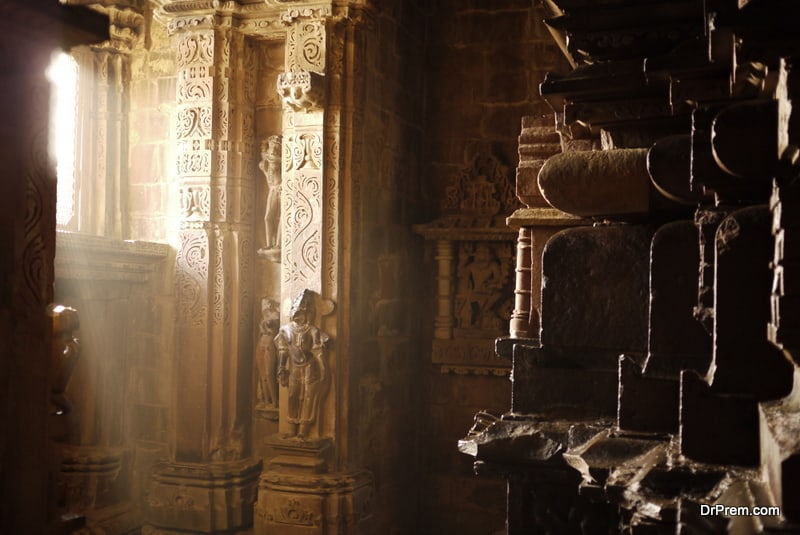
Located about 35 km away from the main site Khajuraho, this is a marvelous waterfall that plunges through a height of thirty meters after hitting the ground and a pool at its base. The tributary of river Ken unites with this spectacular waterfall in a furious blend of waterworks.
According to myth, the Pandava brothers from the Hindu Epic Mahabharata, after being banished into exile have wandered the forests of Central India taking refuge in the Pandava caves at the base of the falls for some time.
Narora Sagar
Just by the quaint village of Khajuraho, there exists a lake called the Narora Sagar. It is a bit off the beaten track but promises a pristine ambiance.
Khajuraho Wild life safari – Special attraction
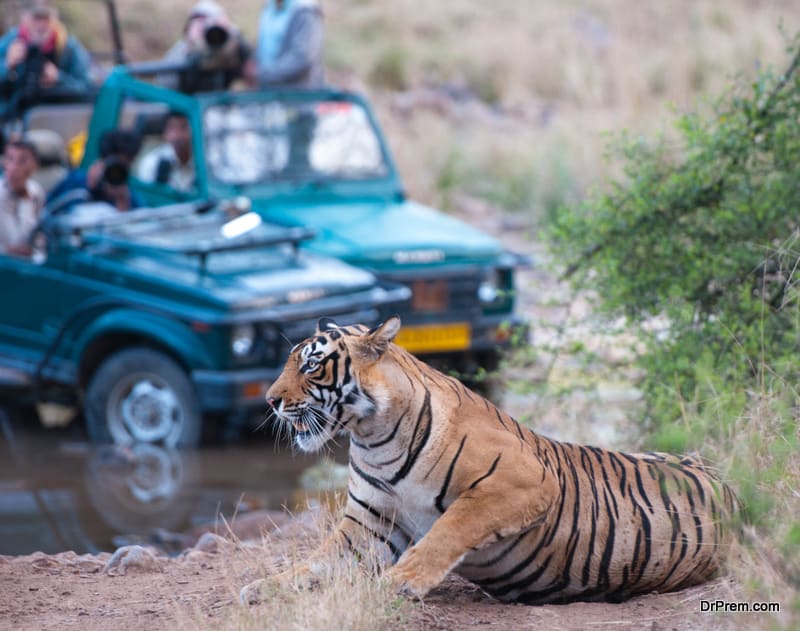
If temple architecture and erotic art of Khajuraho sits well inside you for long, you can always look for a change in its vicinity. Not far from the exquisite temple town there are a couple of wild life escapades that are truly a treat for a wild life buff.
From 25 kilometers of this famous temple town, Panna National Park and Tiger Sanctuary have achieved enough prominence and fame. Almost on a similar popularity meter, the Ken Gharyal sanctuary has caught tourists’ attention for being the best Gharyal breeding centre with focused dedication and resourcefulness.
There are a couple of other wild life reserves located close to the city of Mahoba at a distance of 31 kilometers from Khajuraho and two other reserves in Kulpahar of which Vijaysagar sanctuary and Vijaysagar Pakhshi Vihar have collected fame in terms of annual tourist visits.
Ghariyals, a distant cousin of the monstrous crocodile, are smaller in size and with weaker jaw bite pressure. However, they are efficient predators with surprising maneuverability and supple body movements. Fish is their favorite diet. Due to their weak jaw muscles gharyals are usually not considered a threat to the visitors. But maintain a safe distance from these aquatic carnivores with a pronounced and elongated snout and a slender jaw lined with rows of serrated razor-sharp teeth.
The sanctuary located on the confluence of Ken and Khudar rivers offers an exotic panoramic view. Other varied collections of diverse fauna that make the forest alive and appealing are the cheetah, wild boars, nilgais, chinkara, peacocks and countless varieties of birds. There is yet another wild life sanctuary called the Gomarda sanctuary. A home to sambars, sloth bears, wild boars, barking deer, jackals and dholes, a species of Indian wild dogs this forest cover has all the thrills to offer that would turn an adventure tourist on with a gush of enough adrenaline pumped around to give him his money’s worth of pleasant kick. The right time to visit these sanctuaries is from October through March.
Khajuraho being the nearest airport to land and Harpalpur and Satna being the nearest railway stations, these sanctuaries are easily accessible. Jungle resorts are available and are cozy. Panna wild life sanctuary sets an ideal jungle adventure packed with thrill for wild life fanatics. Besides tiger, the yellow and striped monarch of the wild, this awesome sanctuary is also a home to sambars, chitals, chinkaras, sloth bears and countless bird species.
Khajuraho Dance Festival – The special event
Khajuraho dance extravaganza is an annual cultural event, which is too graceful and brilliant to be true! Arranged every year on a massive scale by the Kala Parishad, a cultural body functioning in Madhya Pradesh, it is a famous gala stretching a week span which features classical dances.
The dance competition is held against dramatically impressive setting keeping the gorgeously illuminated Khajuraho temples in the background. The festival is organized in the opening week of February when the sweet fragrance of spring and Mother Nature explodes into a full bloom of myriad colors and a cacophony of calls set up by the birds twittering from the bush or perched high up on a temple structure.
This cultural festival brings forth the wealth of various Indian classical dance expressions belonging to traditional schools like Kathak, Kathakali, Odissi, Manipuri, Kuchipudi and Bharatnatyam with a brilliant display by some of the legendary performers in the field. Of late, there has been an inclusion of modern Indian dance as well.
It is truly a share of fortune to be able to see dancers from worldwide fame performing in front of your eyes under an enchanting clear starlit spring sky overhead and enigmatically decorated temples set in splendid fluorescence!
The stage is set up right before the Chitragupta temple erected in a show of reverence to Surya, the Sun god and the Vishwanatha temple dedicated to Lord Shiva falling under the western group of temples. Needless to say, the Khajuraho dance festival is performed in open air auditorium and there lies the beauty of it!
There are daily tickets as well as the seasonal tickets covering the entire week through the bonanza. Quite obviously the expensive tickets are the ones offering the front row advantage to the spectators. Prices of tickets fall as the distance between the dancers and the public increases.
Photography gears are charged extra. The weeklong festival is indeed a treat to your eyes and rich nourishment for your artistic senses. Dance enthusiasts from all corners of the globe gather here, and waves of applauses and shouts of appreciation ring in the air.
The temples and the surrounding milieu brilliantly set the classical dance legends into graceful articulation. With the sun settling low on the horizon and the dappled shadows of the gathering crowd and the stone structures pulled longer the audience is held gob smacked as they watch their favorite dancers perform with a magic spell conjured up by their elegant body movement. It is the right atmosphere for you to realize the fusion of worldly element with the divine in a wonderful synchronization.
Khajuraho – Restaurants

Not only does the visual pleasure of the erotic art of Khajuraho temples provides you with a unique kind of mental relaxation mixed with curiosity and fun, the restaurants here will certainly take care of your gastronomic desire. There are a number of quality restaurants in Khajuraho, which ensure you good food and relaxing moments. Let us explore here a few of them that you will remember for the quality of food they have on menu and their hospitality.
Zorba, the Buddha
This restaurant located in hotel harmony with a great roof top ambience would certainly fascinate you as would its delicious food served tempt your palate that you have never experienced before. Open throughout the week, its timings are from 7:30 AM till 7:30 PM.
The interior decor is tasteful with expensive wooden furniture installed. The staffs are warm and hospitable. Stir fried vegetables and hot garlic sauce is a big hit here as is pasta and aromatic preparation of chicken curry. The restaurant furnishings are Buddhist icon inspired and they seem ubiquitously present in the restaurant.
Bella Italia

This restaurant is located in Jain temple road and is open throughout the week with timings between7:00 AM to 10:30 PM. The price for two persons would start from Rs 200 and above. This rooftop eatery is brightly colored to keep you cheerful. The restaurant will give you a pleasant surprise with the choice of furnishings.
Long flowing curtains guard the large sized windows and they appear very elegant. The restaurant focuses on authentic Italian cuisines like flavored pizzas and pastas and a wide choice of salads. You may have your meal custom designed by the chef. While he cooks, you settle with a chilled beer or a rejuvenating coffee.
Paradise restaurant
True to its name, this restaurant retains its standard of food and is immensely popular among tourists. Do not be misled by the modest get up of this eatery as it serves awesomely tasty food. The atmosphere of this restaurant is peaceful and your batteries get recharged as you spend some time here after a hectic trip exploring the temple sites.
Be it the breakfast or the main course lunch or dinner, this restaurant always steals the show with food enthusiasts. The desserts are delicious but moderately priced. The vegetarian pasta and cheesy garlic breads are instant hits. You can even opt for a can of fresh fruit juice or fuming hazelnut coffee. They will leave you absolutely delighted.
Mediterraneo

This restaurant is located in Jain temple road and is open throughout the week except Mondays. The timings are between7AM to 7PMand the price tag is slightly on the higher side. The ambiance is tranquil and the meal is served in generous quantity that will keep you full.
Well, of course, not only the quantity the quality is also very high. The aroma of freshly cooked pizza and pasta dishes would flood your salivary glands. Here Carbonara pizza and pasta need a special mention for their wonderful taste.
Raja’s Cafe
This restaurant is located in the main road and is open throughout the week except on Mondays. The restaurant operates between8 AM to 7:30 PM. Food price starts from Rs 100 for two persons and up onwards. The restaurant is run by two Swiss sisters and the homely atmosphere is appreciated widely by domestic and international tourists. The rooftop restaurant will give you a clear view of the temples. Here you can order spicy Indian cuisine or a hearty Swiss or a Chinese meal as well.
Khajuraho Nightlife
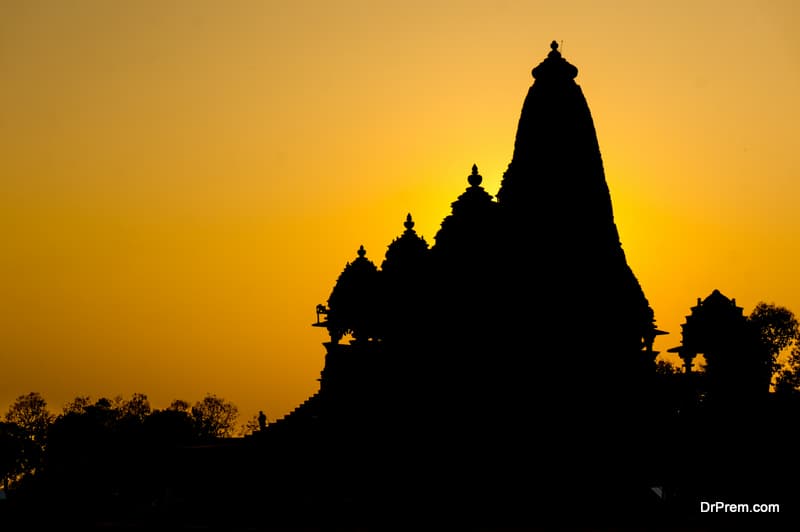
Khajuraho night life is as exciting as the exploration of awesome temple art and amazing erotic sculpture that you have been exposed to during the daytime.
Captivating Night Sky
The night sky in Khajuraho is itself a magic. Dotted with millions of twinkling stars overhead against an enigmatic background of the dark and eternal sheet of skyline the entire environment would simply enchant you, and during a full moon night it is just incomparable beauty. Lit by bright celestial bodies at night, the sky looks gorgeous and the temples and beautifully designed shrines below shine with a kind of eerie halo.
Khajuraho night will send you into a state of bliss by its enormous charm, and that is dependent on which season of the year you are visiting this captivating site. Generally, in spring, nature is at its best with a full bloom of greenery and flowers bearing a sweet fragrance in the air. The night sky is clear and the gentle breeze creates a romantic ambiance difficult to overlook. You will, in fact, enjoy it to your heart’s content.
Sound and Light show
During the evening, when your hour and minute hands of your wrist watch coincides vertically downwards, the famous sound and light show of this enchanting tourist destination commences with all its glamour and arresting appeal.
This program is organized by the Department of tourism, and the venue is in the Western group of temples. The garden where the audience gathers is well groomed and picturesquely beautiful providing a perfect setting for the famous event to go on full-flight capturing the collective mood of the audience taking them to the height of a psychedelic ecstasy.
Chairs are arranged in the garden under a ravishing night sky as tempting as the bewitching stone carvings of ancient Indian beauties that you might have explored during the day. Sometimes, the voices of celebrities like eminent film stars and other famous personalities are employed to address the audience with excerpts and anecdotes drawn from the rich history of the Chandela kings and their immense contributions towards Khajuraho temple art and erotic sculptures.
The voice unmistakably creates a dramatic effect on the audience who now has gathered tightly on their seats listening and absorbing all of it with rapt attention.The show peaks gradually attaining a crescendo of delight and the enticing background voice punctuated by an equally enthralling music holds the audience with undivided attention in a powerful and yet sublime grip. The curiosity of the audience keeps mounting with the awesome narration detailing the construction, history and the significance of the temples.
The myth slowly comes up in a hypnotic voice where we are told Hemavati a local Brahmin girl of a stealing feminine beauty was united physically with the Moon god right over here. Consequently, a son was born to her whom Hemavati raises with love and care.
This child one day grows up to become the founder of Chandela dynasty. Since the dramatic episode has its source in physical unification of a human being and an omnipotent deity, the Moon god and the explanation for glorification of sex in temple art becomes quite evident.
The show takes place in two phases. The first one is voiced in Hindi and the second one in English. The quality of the baritone voice has much to do with sustaining the atmosphere and building up the magic spell. Entry fees are charged.
Khajuraho – Off the beaten track
After exploring historical temples, gardens, erotic art and dance festivals, you should not miss other offbeat attractions in Khajuraho that will keep you spellbound. Let us explore these out of the way attractions that have fascinated the tourists with added curiosities and thrills which perhaps only Khajuraho can offer:
Yoga- Awesome displays

The man walked with a slight limp and was most ordinarily dressed hiding a mountain of talent with which he could summon a crowd of tourists as a magician would do with his magic wand. His name was Gopi. We fixed an appointment with him at a venue just a kilometer away from our hotel. A few Americans and a Dutch couple joined us as well to be the spectators to Gopi’s jaw-dropping displays.
Just before dusk, we went to meet Gopi at the appointed time and venue. The thin soul was clad in a light dress. It was a soothing summer evening with a light breeze relaxing enough to set our comfort level right. Without much ado, the man straightaway headed for business.
Gopi was a yoga practitioner. It was his bread and butter. After a little bargain, we settled on an agreeable fee for his spectacular yogic display. The Americans and the Dutch couple smilingly agreed to his demand. He sat on a carpet spread on the floor in ‘Padmasana’.
Exerting all his body weight only on the fingers of both hands that were his only contact with terra firma, he lifted himself through an astounding height of half a foot from the ground. He seemed to do this effortlessly and remained in the position with tranquility written over his face as if he could continue like this for a span of eternity.
Next he did a full arch resting his body on his knees in the pose of ‘ Ushtrasana’ or the Camel stance and bent his vertebral column so much that his head almost touched the inside of his knees at an impossible angle.
He demonstrated the most difficult posture ‘ Sirsasana’ where his body was posed vertically upside down with all his body weight resting on his skull that was in contact with the ground. After a few Asanas or yogic stances we told him enough is enough and he need not risk an injury further displaying his yogic skills. Gopi answered with a smile.
The man’s body was incredibly flexible and seemed made of some kind of elastic material. He explained us the health and sexual benefits of these yogic practices which are certain to enhance our virility. In Khajuraho, a great importance is put on the primitive carnal desires of human beings, I mused smiling.
The old village of Khajuraho
The ancient village of Khajuraho is another offbeat attraction located near the temple site and is a specimen for some serious exploration. The village looks like any other Indian village with rustic lads and lasses frolicking around. The rural population was engaged in their daily chores, and there was a general sense of harmony in the air.
But on a closer look, I came to learn all that you see around is not the real story. Behind a facade of universality and calm, there exist certain demarcation lines which are very sharp separating one caste from the other. There were separate wells and property markings based upon the caste of the owner. The concept seemed weird and unjust but nevertheless ignites your curiosity.
Raneh Falls and Ken Crocodile Sanctuary
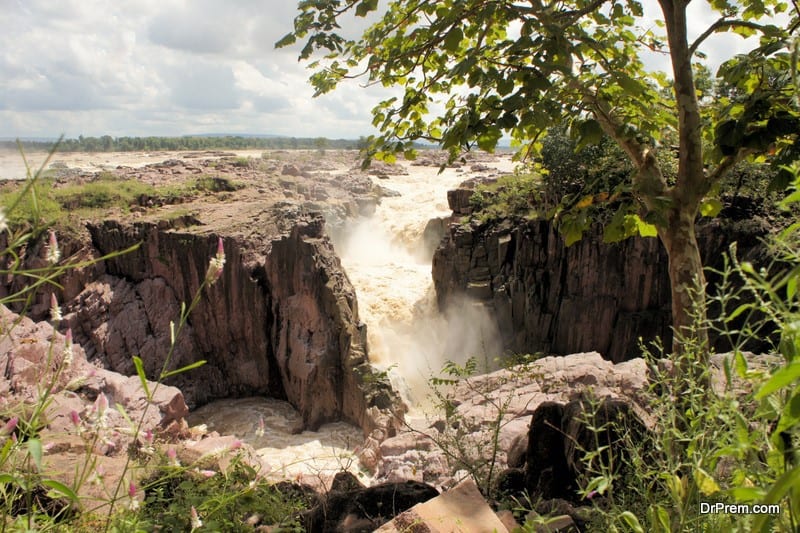
Just 18 km away from Khajuraho, you will find this fascinating site nestled amidst nature. The landscape is brilliant with a picturesque distribution of granite rocks and greenery merged in a wonderful mix.
The locals fondly call this place ‘The Grand Canyon of India’. The place is a home to langurs, peacocks and a variety of birds and reptiles. Two types of crocodiles are farmed here; the fish-eating ghariyal and the carnivorous crocodiles. The place is a tourist’s paradise for those who are in quest of a little out- of- the-way adventure.
Varaha temple
This exquisitely designed structure is the very first temple you come across as you enter the threshold of the western group of temples. This temple is famous for its nine feet tall huge statue of a boar, which is, in fact, an incarnation of the Hindu deity, ‘Varaha Avatar ‘. The sculpture is awe inspiring by its sheer size and animal strength which is reflected from the creation.
Khajuraho – The Best time to visit
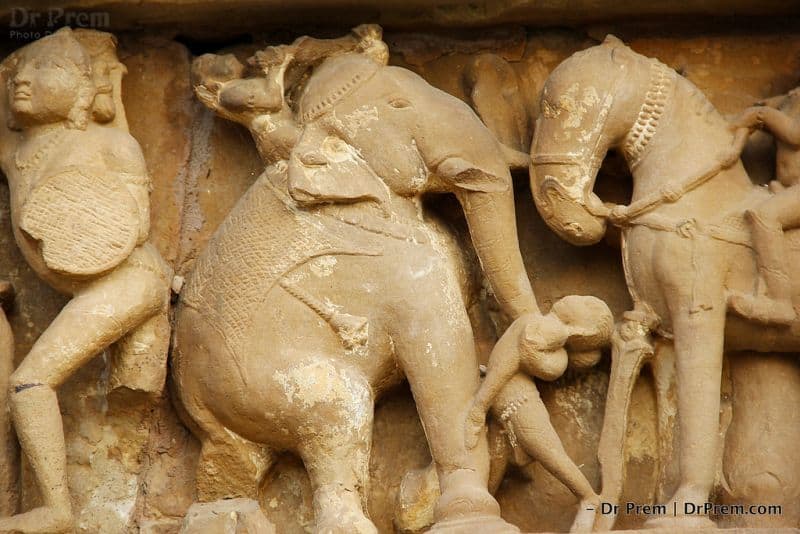
Image Source : photo.drprem.com
The climate of Khajuraho fluctuates in tune with the seasonal changes, and depending upon your tour itinerary and the schedule of activities one touring season in Khajuraho can be more desirable than the other. In general, Khajuraho is a rather dry place and so your tour program will never be hampered by water logging and flooding even during the rainy season.
Ideally, the time period from July to March would be the best for a Khajuraho trip as the temperature remains comparatively cooler. One must remember Khajuraho is an extremely dry area almost devoid of humidity. So even during the high summer season, your body will not be drained off moisture losing your vital salts as you do not sweat much. You may find yourself highly enthusiastic about exploring around temples appreciating erotic sculpture even under the punishing sun.
Here we have a season wise breakup of the typical Khajuraho climatic features according to which you can plan your trip:
October to February
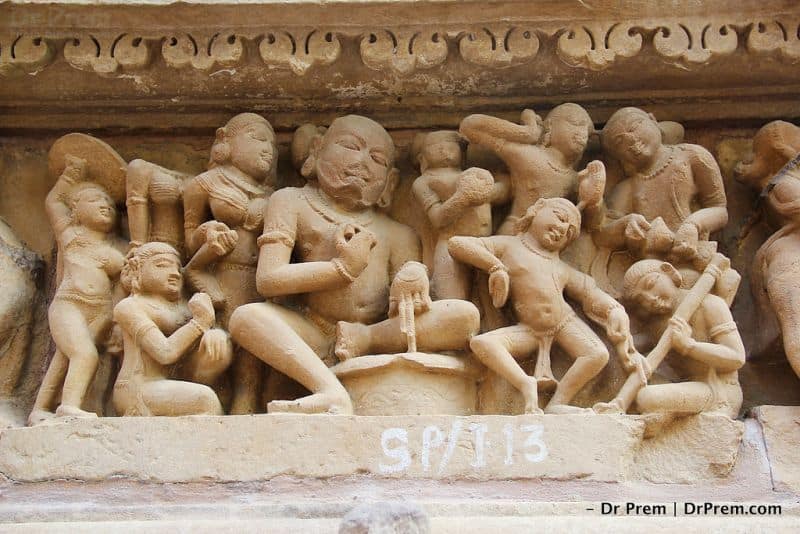
Image Source : photo.drprem.com
The long stretch of five fascinating months from October to February commences the advent of the winter, the best season to explore Khajuraho outdoors. The atmosphere chills around 20 degrees Celsius on an average November day, and there is a sharp drop in mercury as we move on to drier months ahead.
By the month of January, the chill in the air will beat the shit out of you with a freezing temperature of around 4 degrees Celsius. This is the prime season for exploration of temples and Khajuraho’s custom designed erotica on the rock. You can do this on foot with a knowledgeable guide accompanying you.
Winter is good for taking long trips to forests and mountains like Panna national park, Pandava falls, Raneh falls and Ken crocodile sanctuary. The mellow sun rays feel great and, in fact, you would extremely enjoy its warmth by the side of your hotel swimming pool if you prefer to stay indoors in a lazy winter afternoon.
February is that long awaited month for which you might have been planning a Khajuraho dance festival trip well in advance. Stay throughout February and March, enjoy the dance festival, relish the enchanting spring and a sweet flowery fragrance in the air and be inspired by the romance that is overwhelming and triggered off by the intimate male – female intimate poses immortalized on rock.
This season is ideal for a visit along with your paramour. Both the partners get a lot of encouragement from the rock carvings in the backdrop of a spring season when Cupid himself has made both of you his target for shooting all his wonderful arrows.
March to June
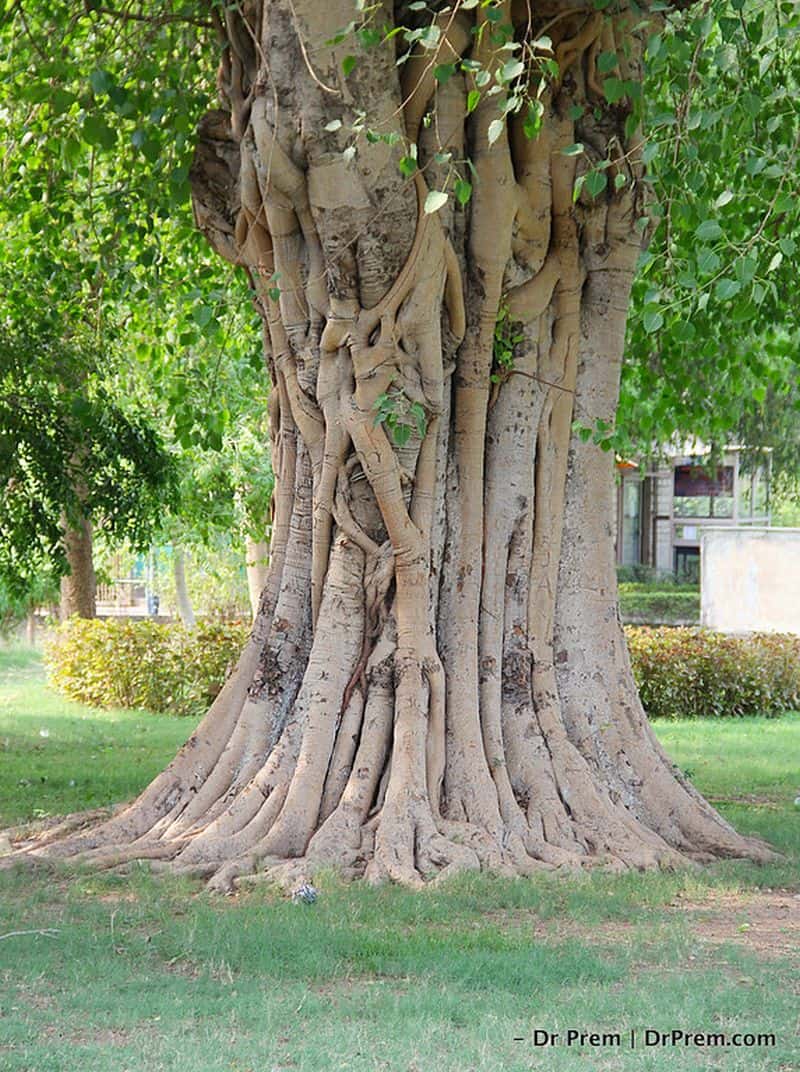
Image Source : photo.drprem.com
March to June will be the summer season with the scorching sun overhead fiery and furiously spewing heat that might slow you down a bit. Never mind. Drink enough water and juices to keep you hydrated and take necessary protection. The temperature might shoot up to 47 degrees Celsius during mid-May when city tour is advised. It will be pleasant inside a cozy air-conditioned restaurant chilling out at your leisure.
July to September
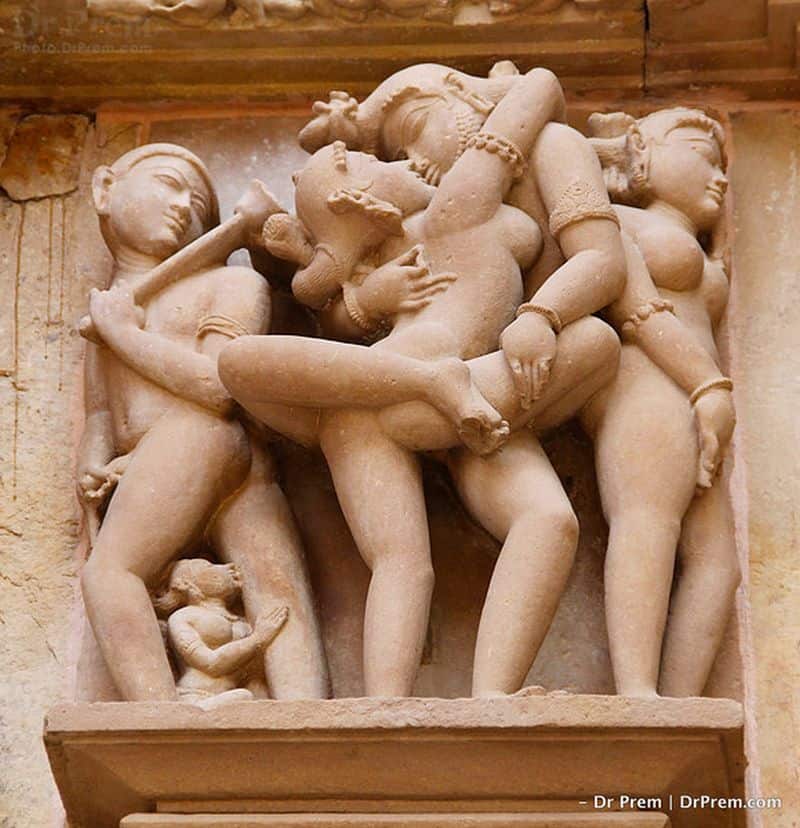
Image Source : photo.drprem.com
July to September is monsoon season in Khajuraho with different kind of attractions that go with it. Fed by rain, the vegetation around the city turns lush green. The wild forests freshen up in a new look attractive enough for tourists. It is humid during daytime but evenings are soothing. The temperature remains within tolerable limits. Exploring temples and other architectural marvels may not be that tiring. Evening sightseeing is opted by many to escape the humidity. The wild forests freshen up in a new look attractive enough for tourists. Since Khajuraho monsoon is lean, you may avail stay at boutique hotels at decent off season discounts.
How to reach Khajuraho?
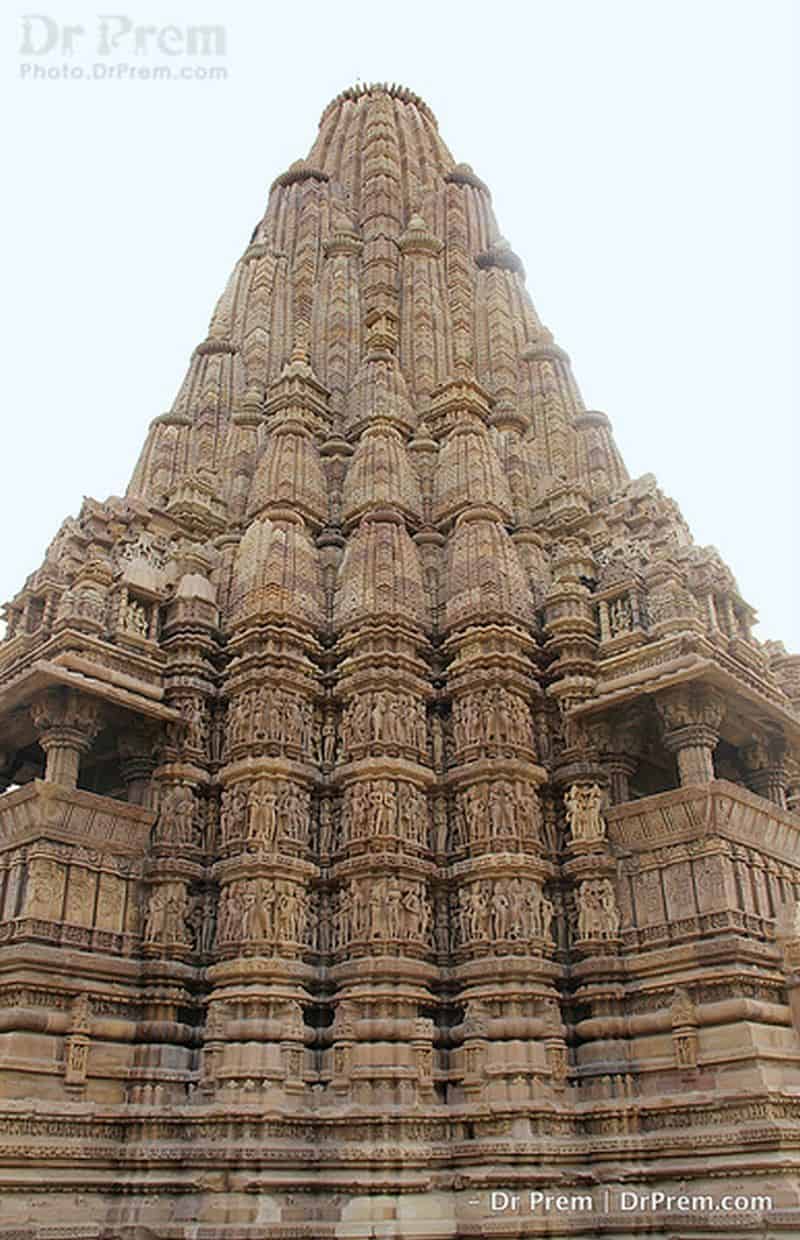
Image Source : photo.drprem.com
Although Khajuraho has stirred the curiosity of the international tourists, it doesn’t have direct international flight connections with the world’s major cities like New York, London, Tokyo and Sydney. One has to reach India’s major cities like Delhi, Kolkata, Chennai and Mumbai to catch the next flight to Khajuraho. However, a network of connections within India through flights, rail routes and roads would put you smoothly into this spectacular destination of international repute.
By flight

This legendary spot of incredibly wonderful architectural splendor has its own domestic air terminal called the town airport Khajuraho area. Located within a distance of just 2 kilometers from the Khajuraho city to its south, the terminal assures a comfortable entry. Flights from Indian capital of New Delhi hit this city with ease as does the flights from the holy Indian city of Varanasi.
By train
Just within a reach of 5 kilometers of this tourist friendly site, Khajuraho has its own railhead. Mahoba junction is just away by 75 kilometers and has railway route links with all important railway stations scattered across the country.
Private taxis and city buses ply from Mahoba directly to the site. The ride is smooth and hassle free. Here is an enlistment of a few trains from some of the Indian cities that will drop you to your desired destination dotted with temples and awe inspiring cluster of famous monuments with elaborate thought provoking and tasteful decor.
From the city of Delhi, you have the Uttar Pradesh state Samparkkranti express. From Varanasi, you can board the Bundelkhand express.
From Jhansi in Uttar Pradesh, you may board the Jhansi – Khajuraho express. From Udaipur in Rajasthan, you get into Udaipur city- Khajuraho express.
From Kanpur in Uttar Pradesh, you have the Kanpur-Khajuraho city traveler.
By road

Khajuraho has an excellent network of roads within the state border of Madhya Pradesh and beyond. The national highway 75 connects Khajuraho though a labyrinth of local avenues. Semi luxury and chic automobiles ply across at regular intervals to hit this famous tourist destination. Private taxis are available as well.
There is a brilliant and easy mode of exploring in and around this breathtaking location to reach its famous temples. You can hire a motorcycle. If you are energetic enough, you can trust you feet and break into a promenade through fresh and unspoilt nature. Trendy rickshaws and tongas (horse driven carts) are regularly available to reach you to your desired spots.
Khajuraho – Where to stay?
When you are in Khajuraho rest assured that you will be taken well cared of so far as your lodging issues are concerned. You have a cluster of great accommodations for peaceful and relaxed stay with fine dining. Some of the prominent hotels are enlisted below:
Hotel Harmony, Jain Temple road

Image Source : hotelharmonyonline.com
This exclusive hotel has thirteen rooms with private terraces and offers you a cozy stay. The ambiance is tranquil and room services delivered with dedication and class. Situated in the hub of the city, the hotel is within a short distance away from the temples and manageable on foot. The airport and bus terminals are just 3 kilometers away respectively. This place has a well groomed garden with a Hispanic touch. Food is excellent. There is a multi-cuisine restaurant called Zorba the Buddha. The wonderful lotus pond is an added beauty.
Hotel Taj Chandela
This is a five star hotel located at a distance of roughly 3.5 kilometers each from the Khajuraho airport and the railway station. It is beautifully landscaped and has facilities like mini bar, laundry service and coffee corner. Rooms are air conditioned with excellent room service. Continental food is available and is reasonably priced.
Hotel Ramada
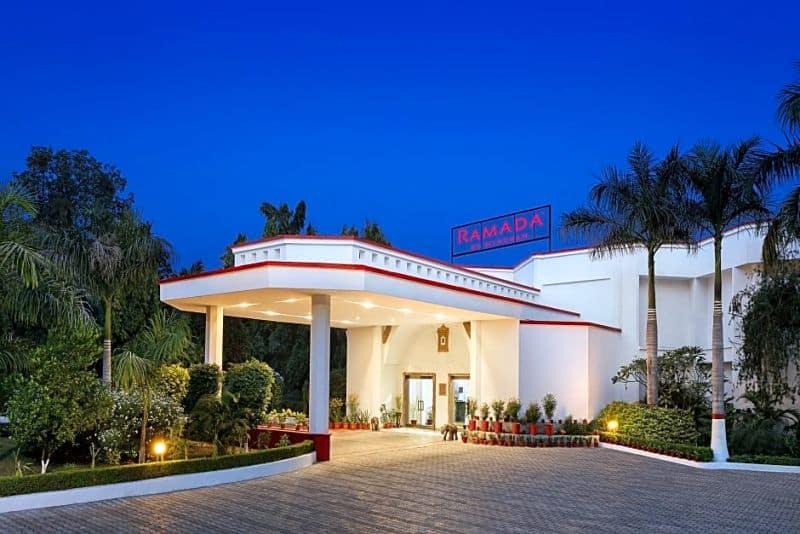
Image Source : images.getaroom-cdn.com
This is an elegant five-star hotel on the airport road and at a distance of 6.6 kilometers away from the Khajuraho railway station. Of the number of facilities on offer, a chic restaurant, a decent bar and a well maintained swimming pool features with prominence. Food is reasonably good and the prices are alright.
Hotel Surya Khajuraho
This hotel has moderate price tariffs located on the Jain temple road. The special feature that makes this hotel a unique residing abode is its love for the past and present as well. The interior decor is breathtaking where the old world appeal exists in coherence with the new world magic. The rooms are elegantly decorated, and the ambiance is charged with class and a pleasant feel.
Shree Krishna Jungle Resort

Image Source : p.bookcdn.com
Located on the By Pass road this homely abode has a calm atmosphere with personal care and ambiance is friendly. The resort has a lot of greenery surrounding it on all sides and offers you a different kind of charm that you feel a sense of unification with nature. The food is fresh, homely and savory.
Hotel Isabel Palace
This is a single start hotel located on the airport road and in proximity to airport itself. It has a conference hall and other facilities include 24 hrs hot and cold water supply with air conditioned rooms.


